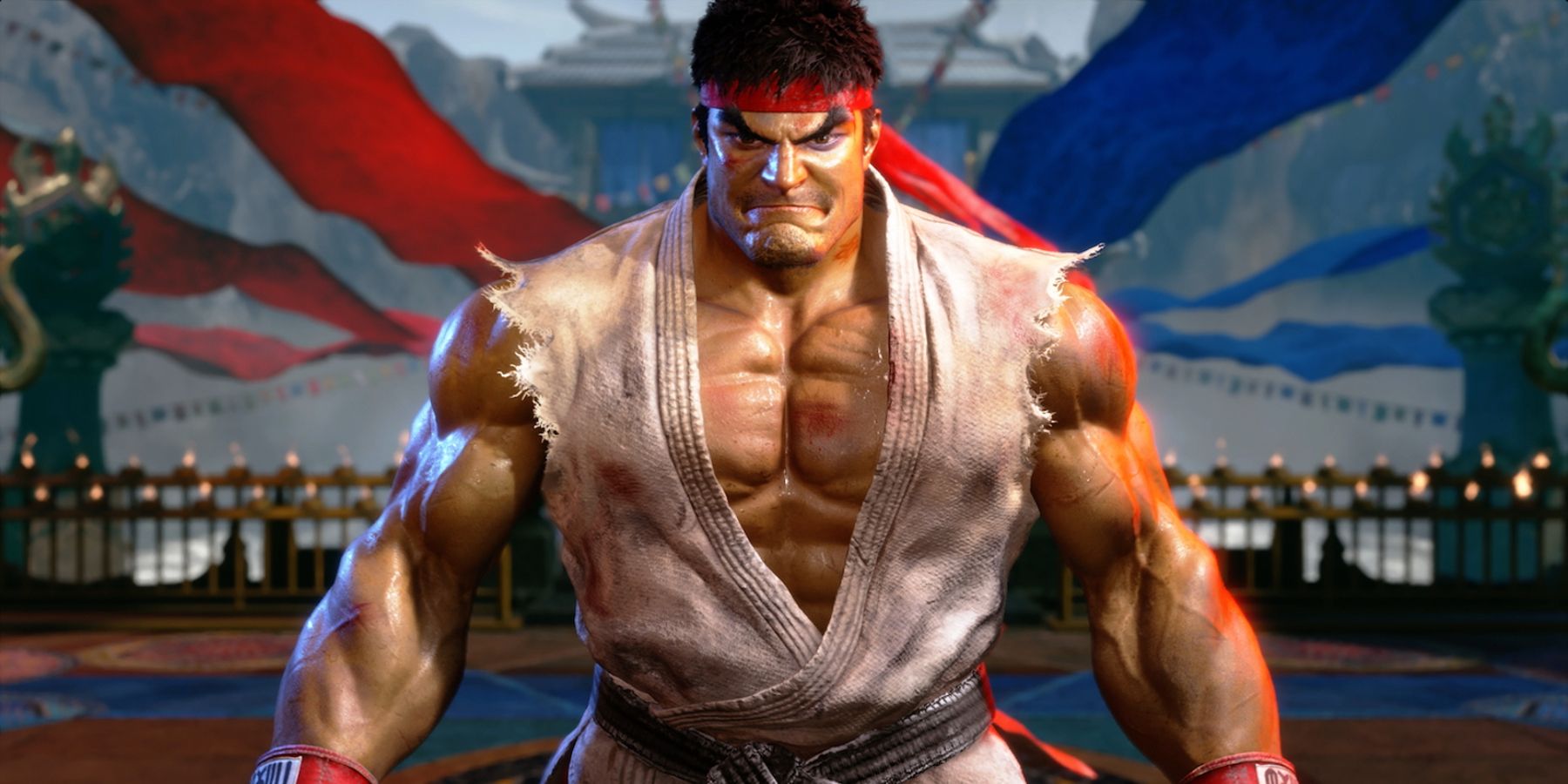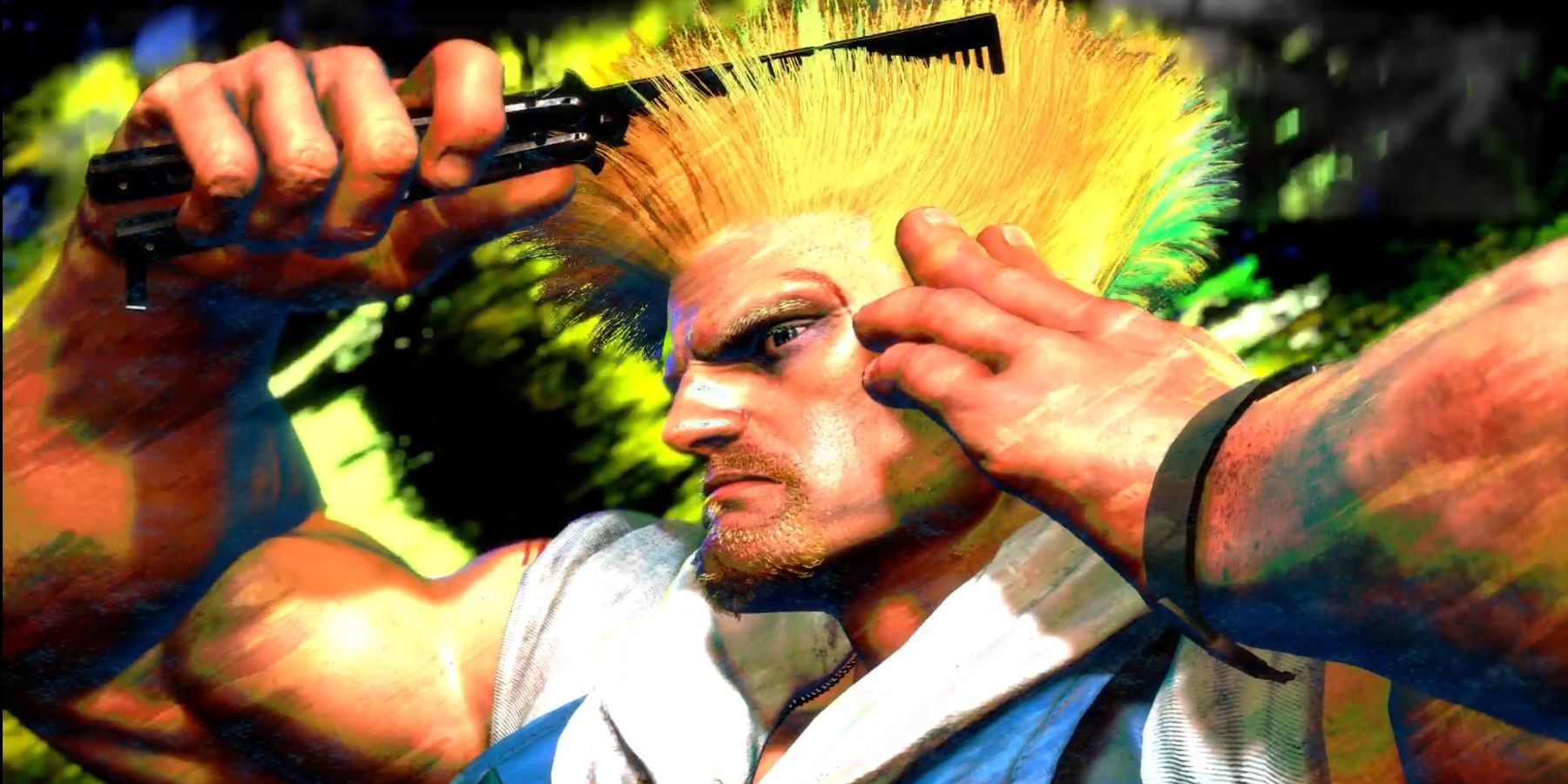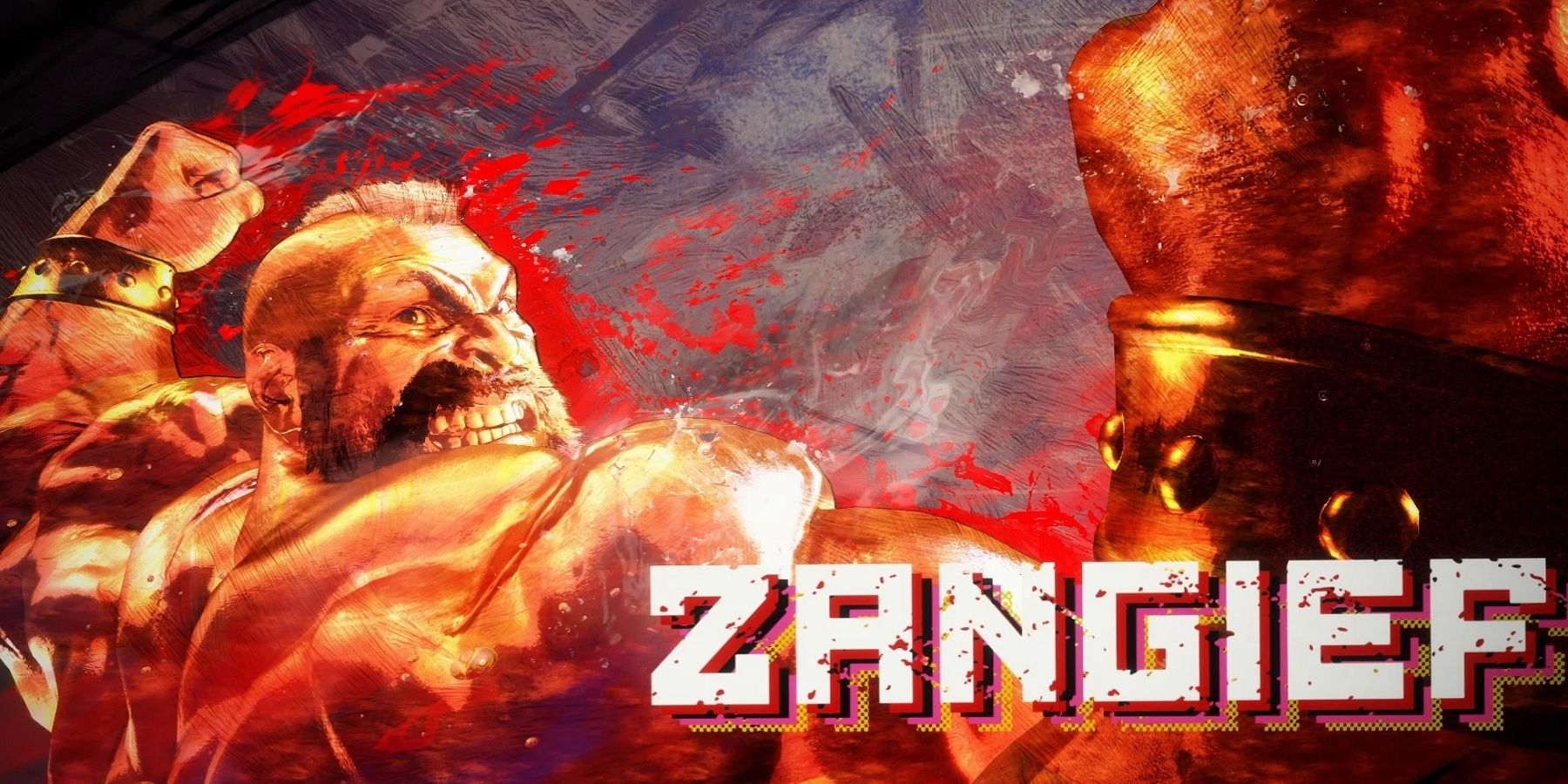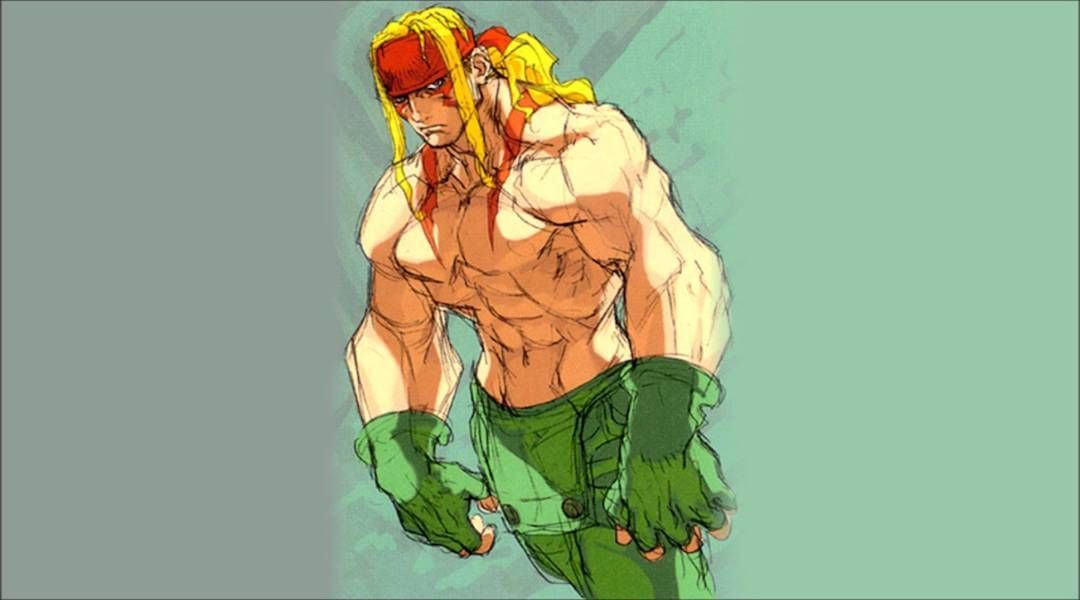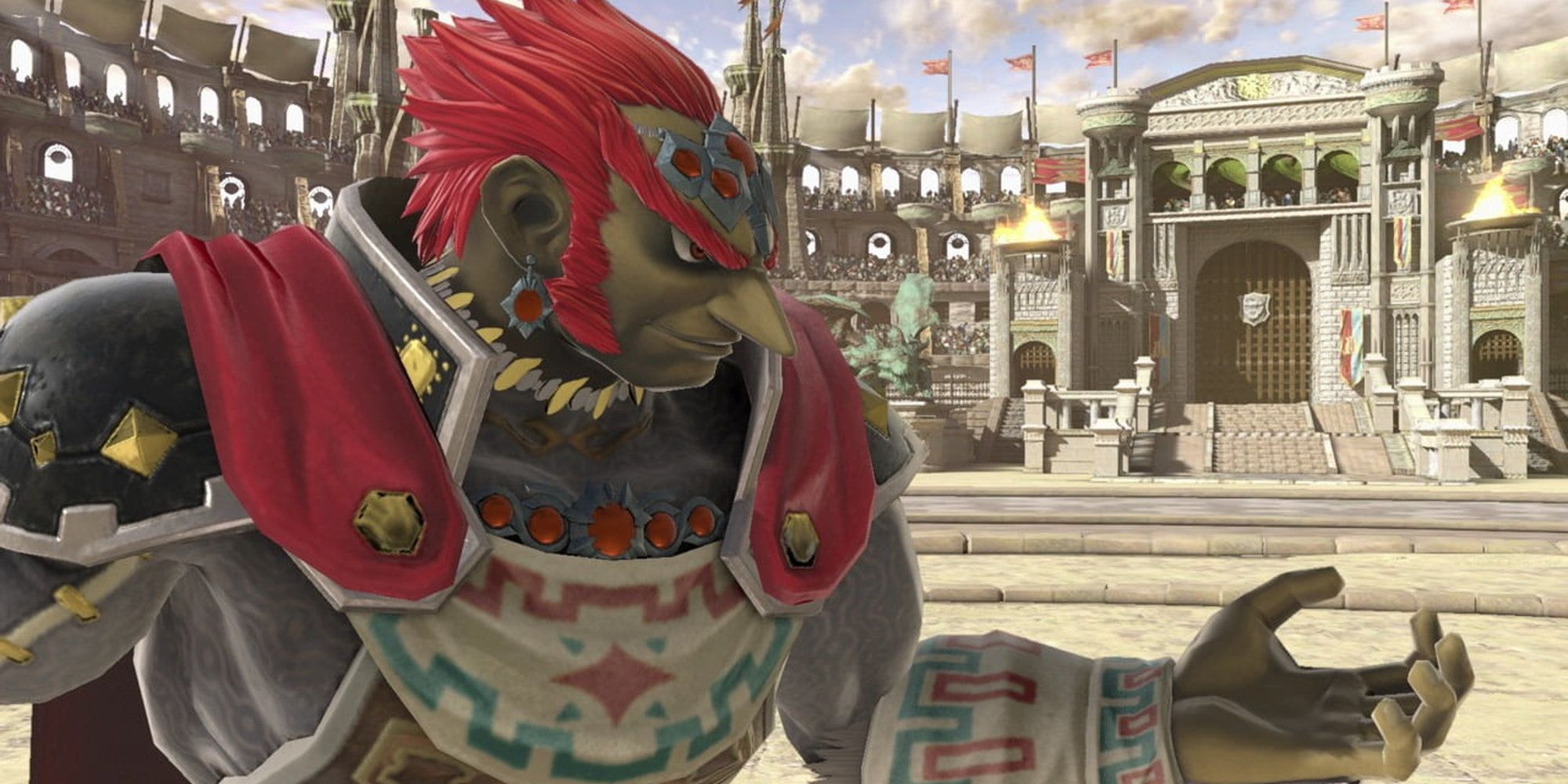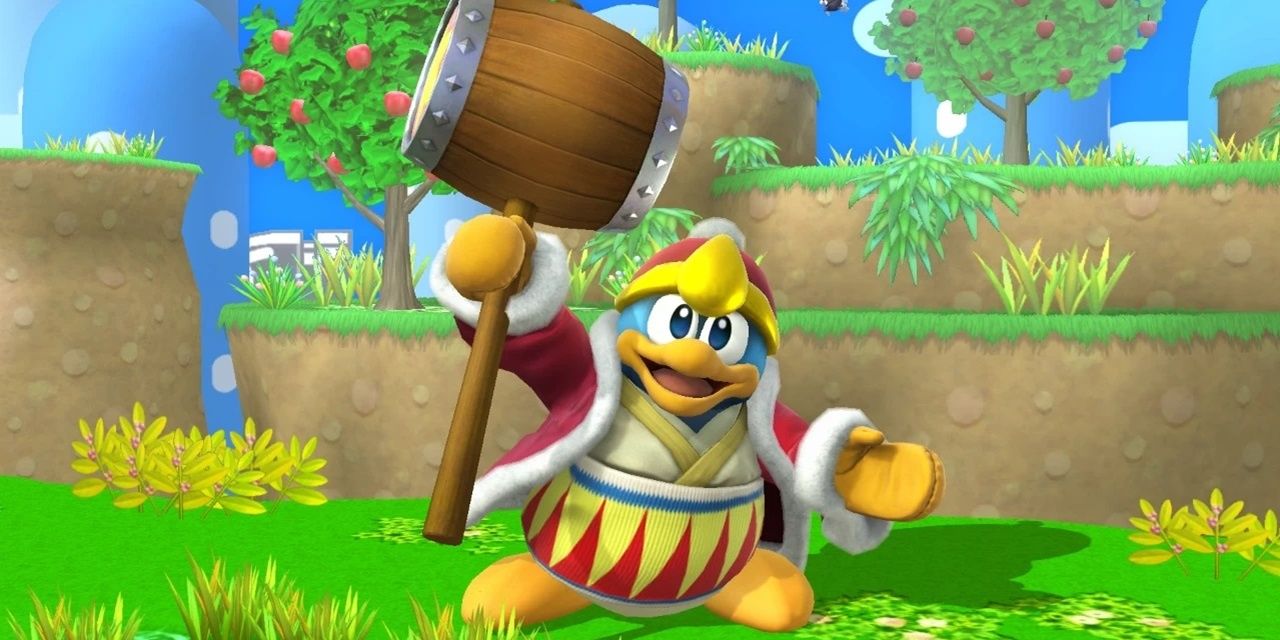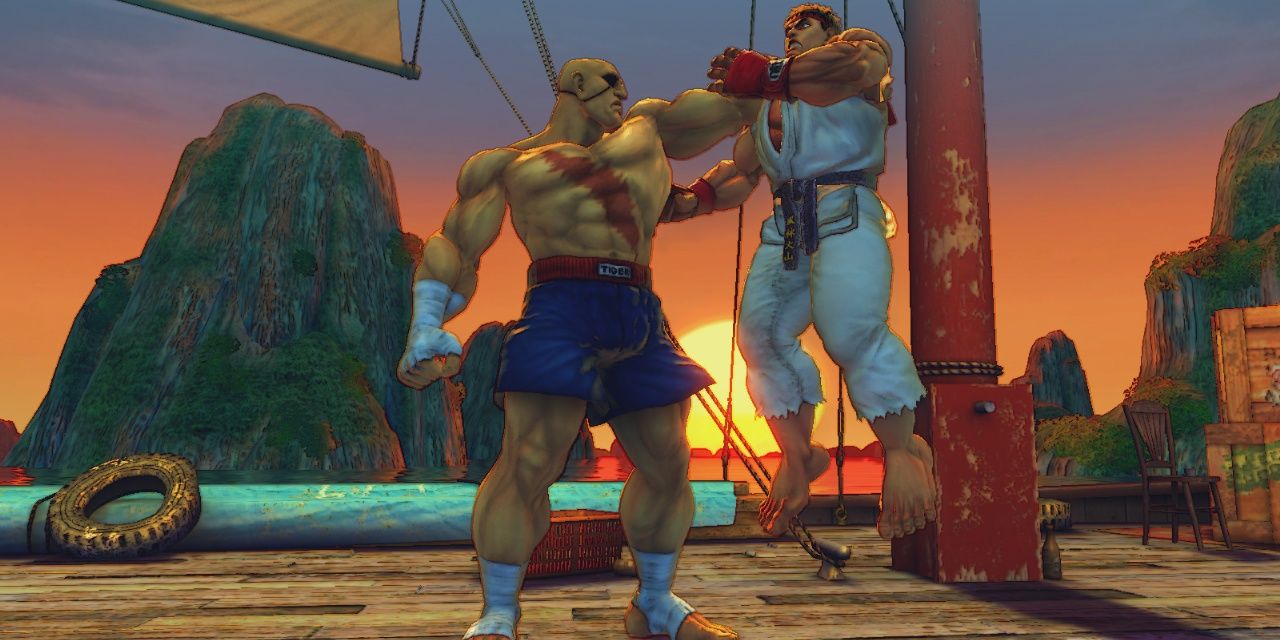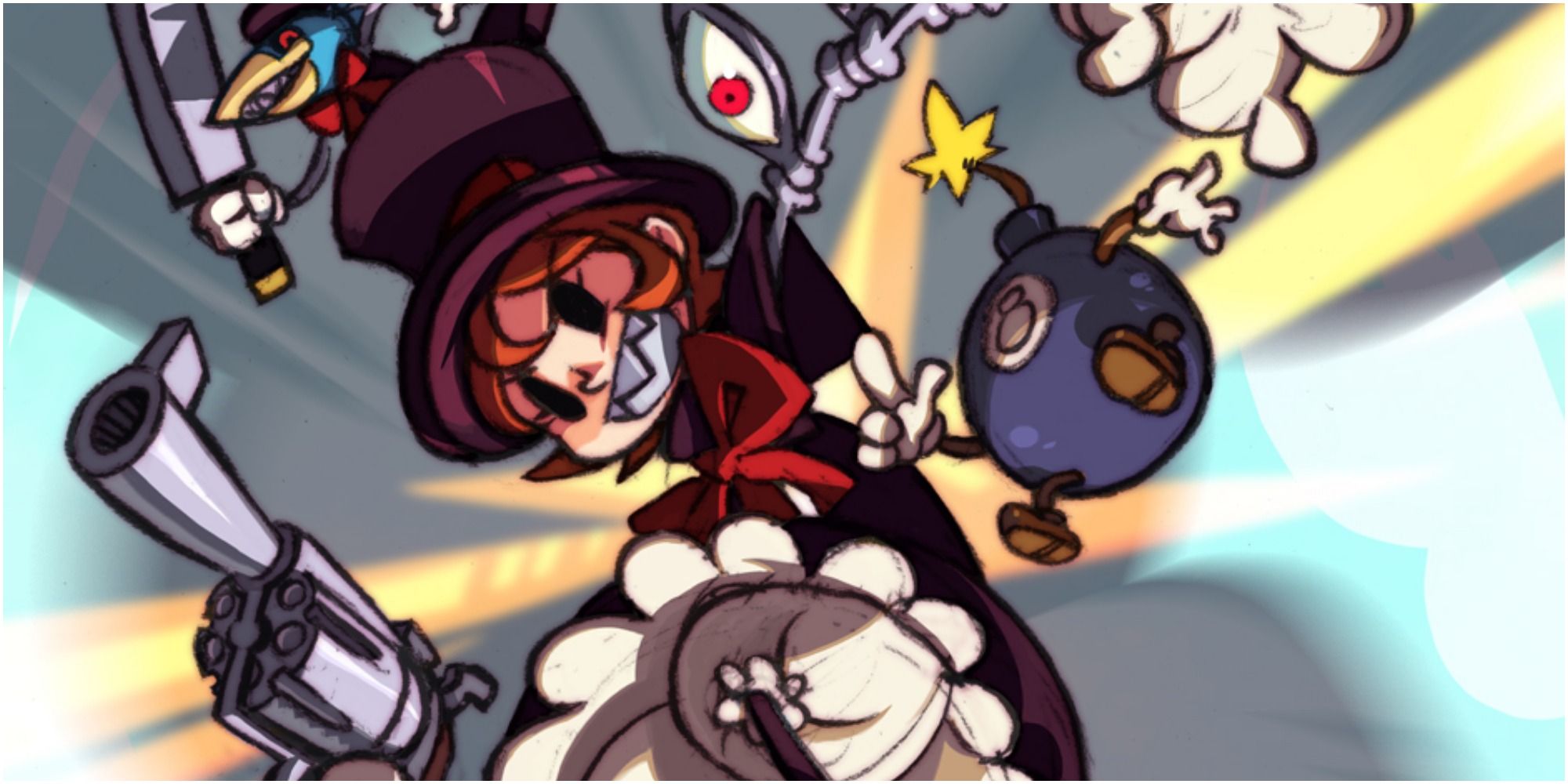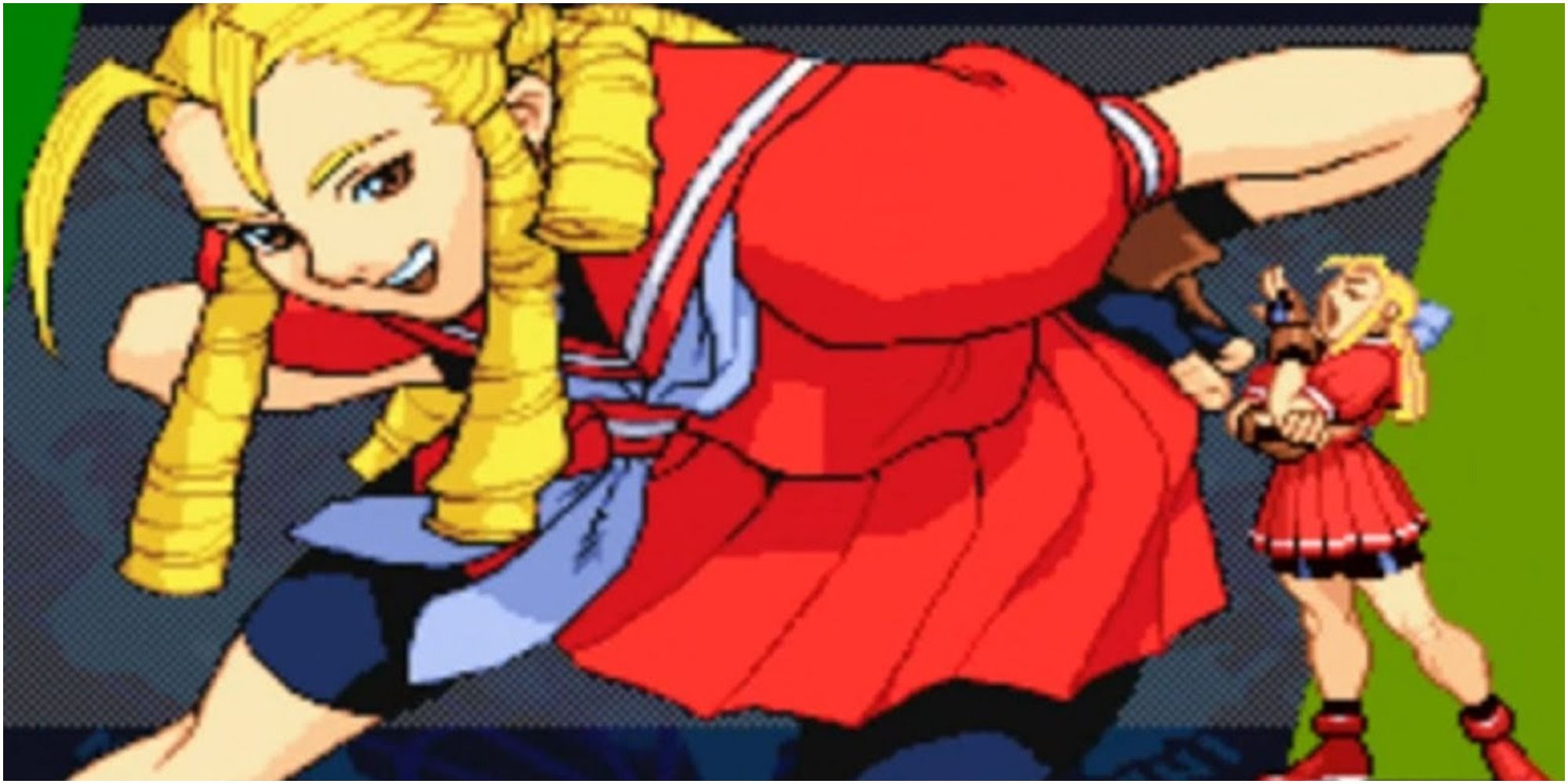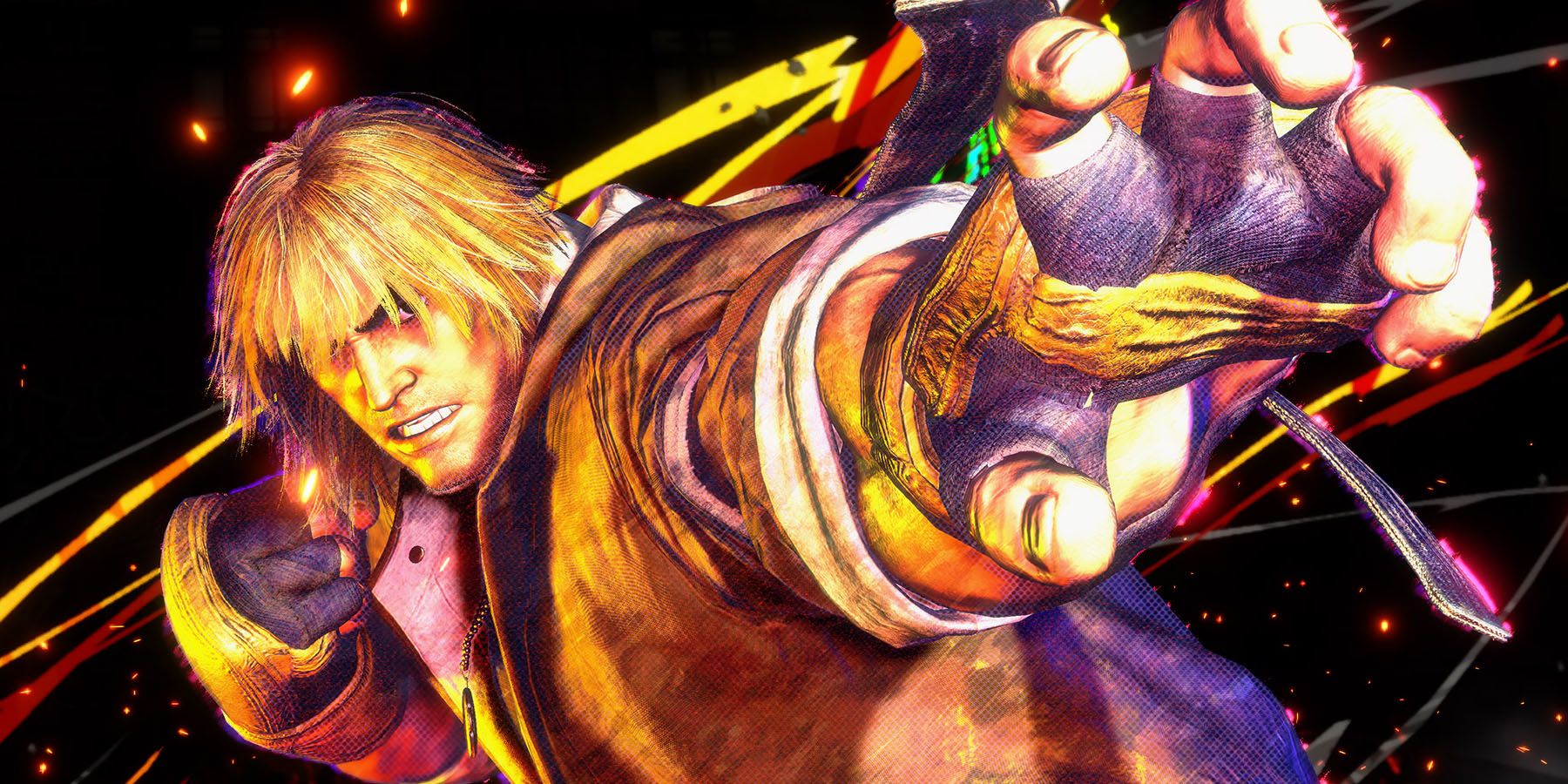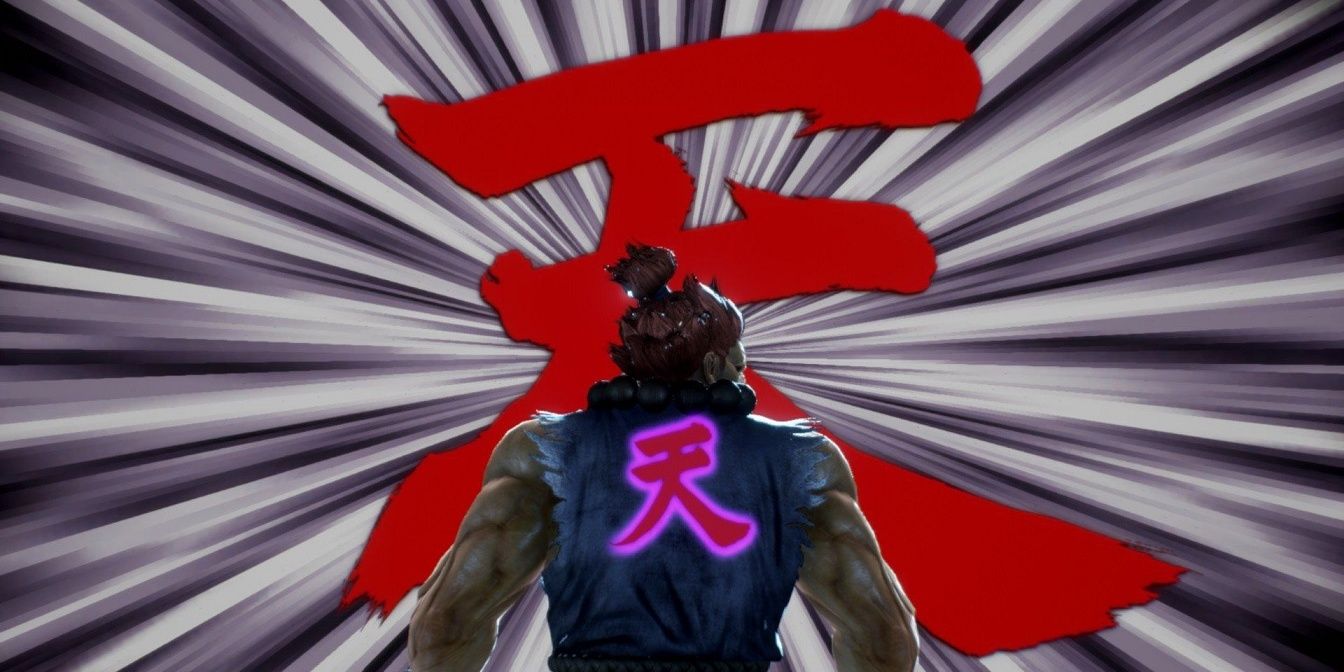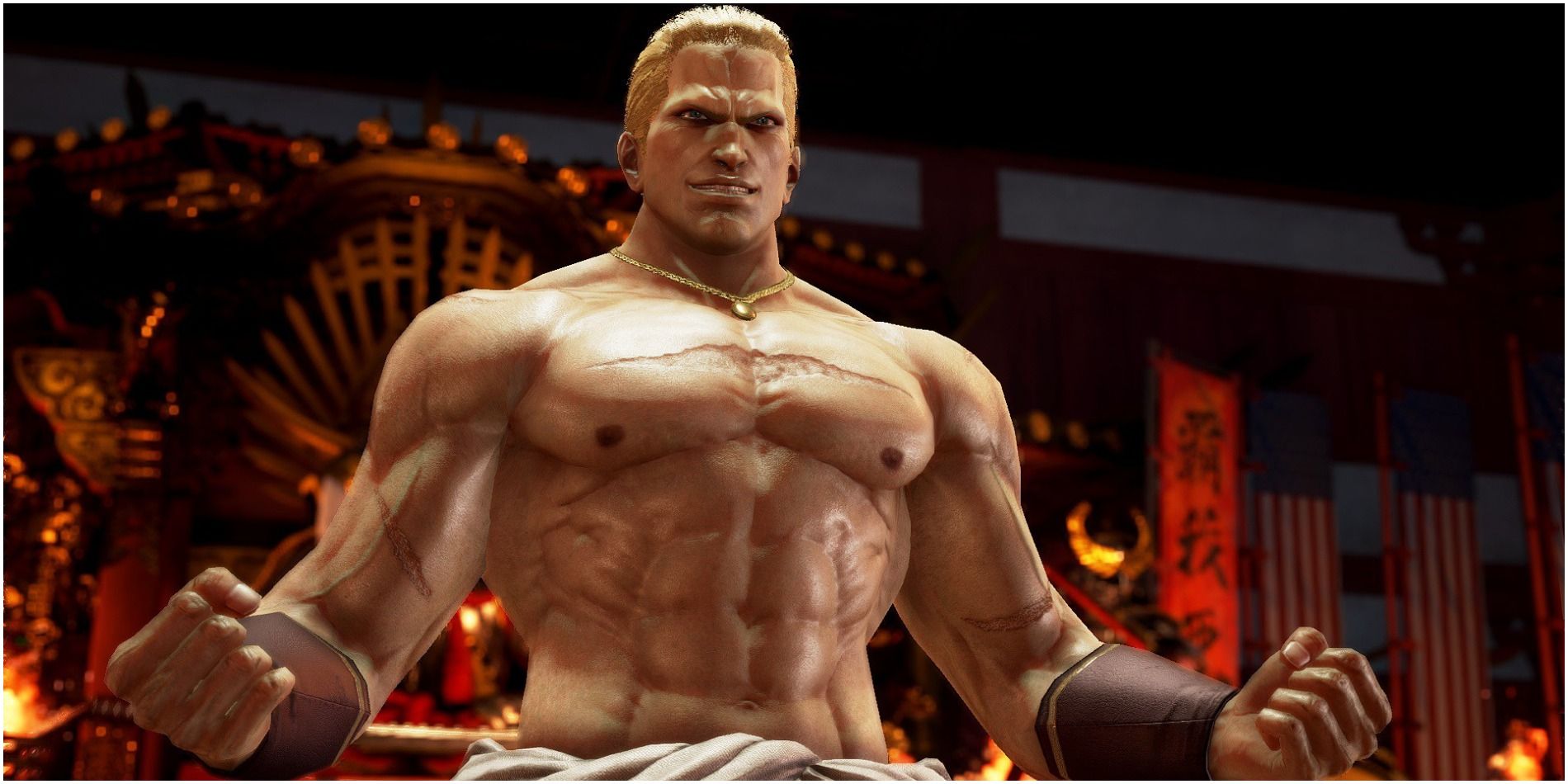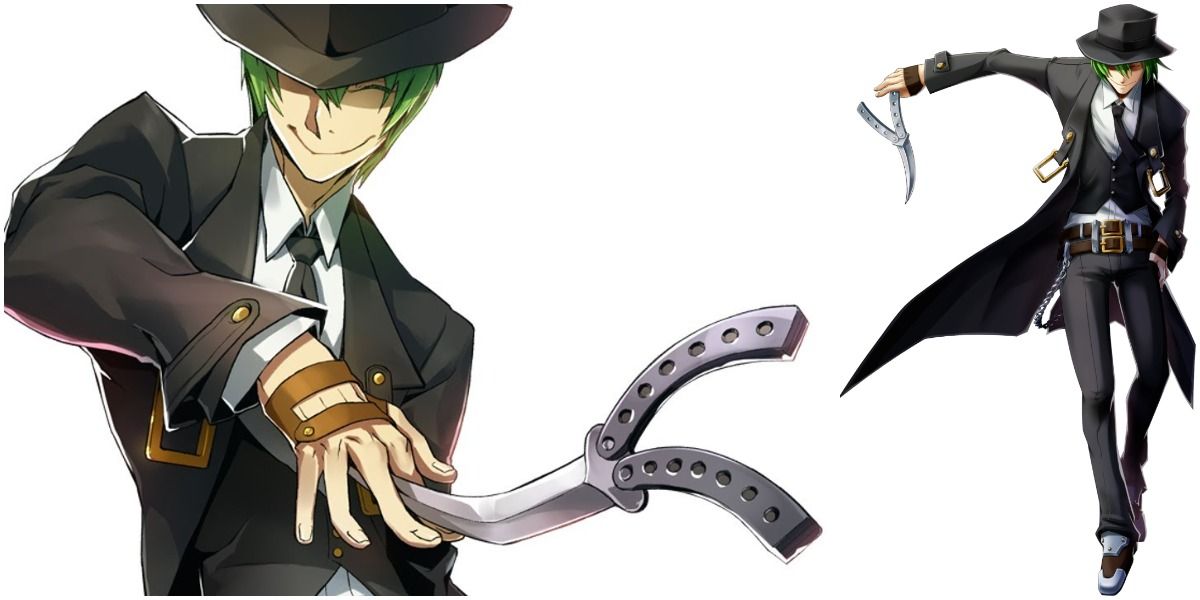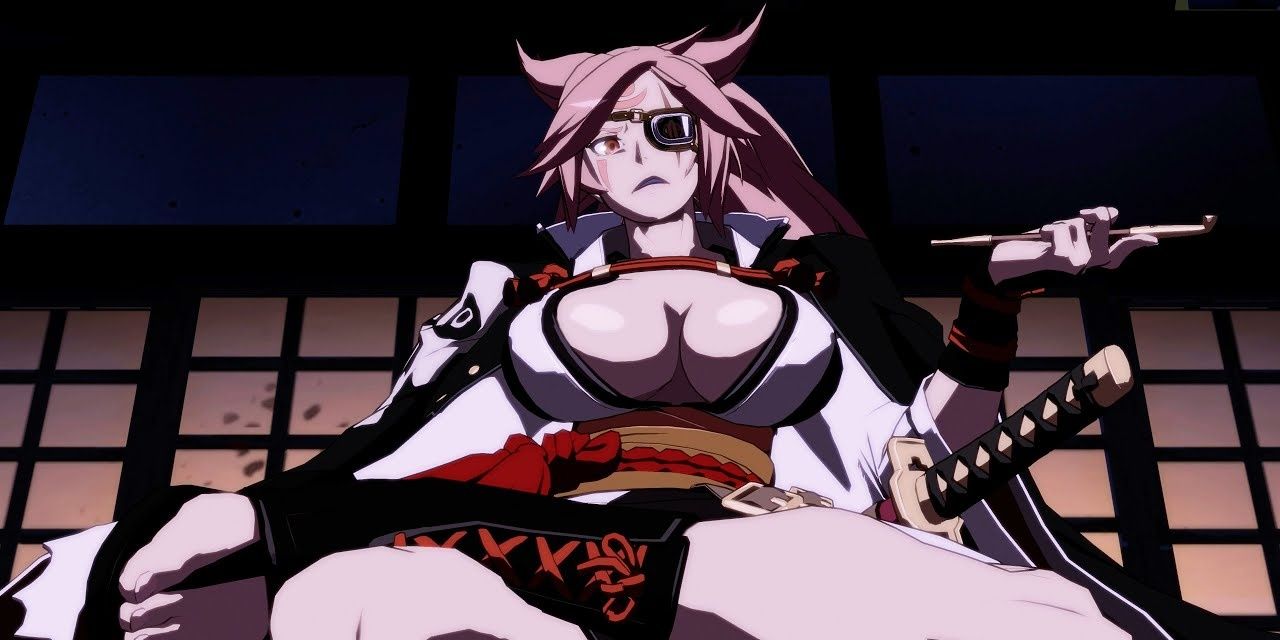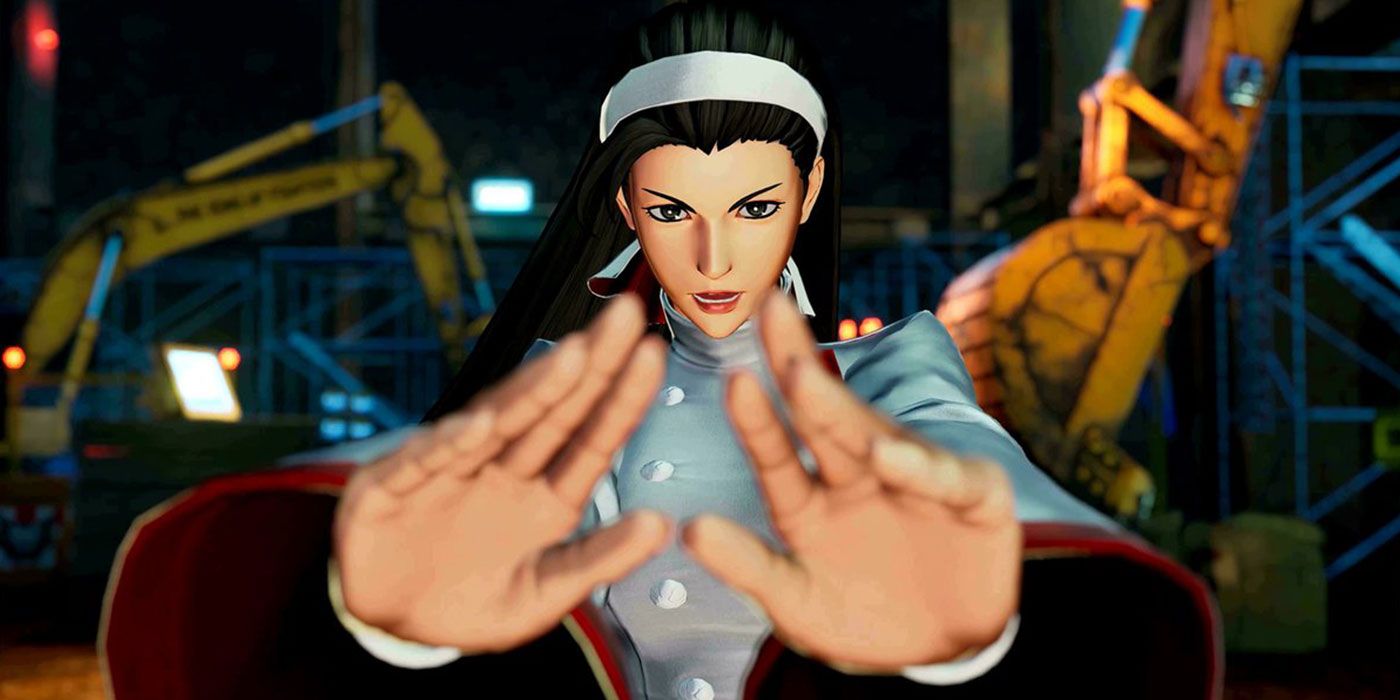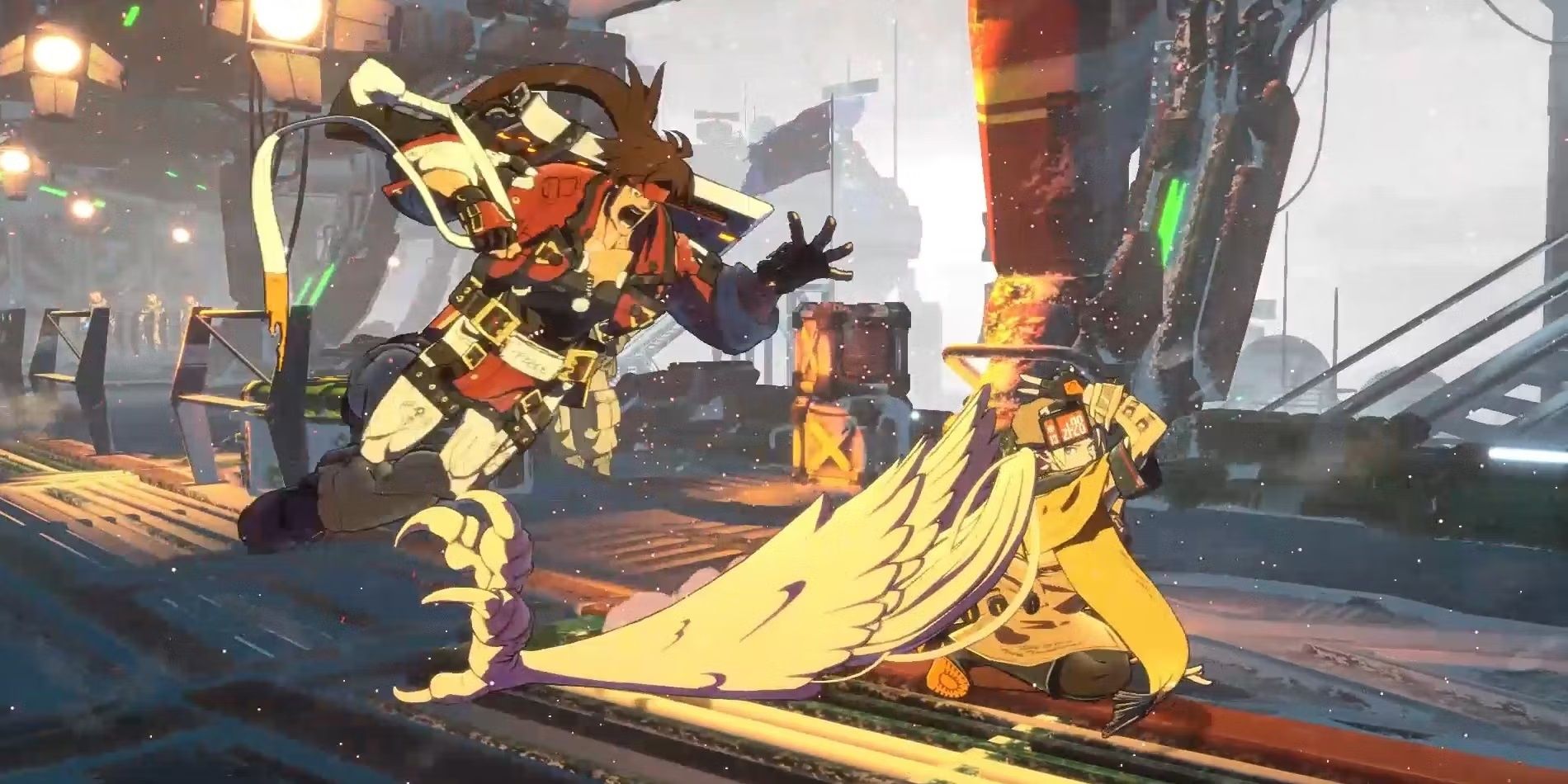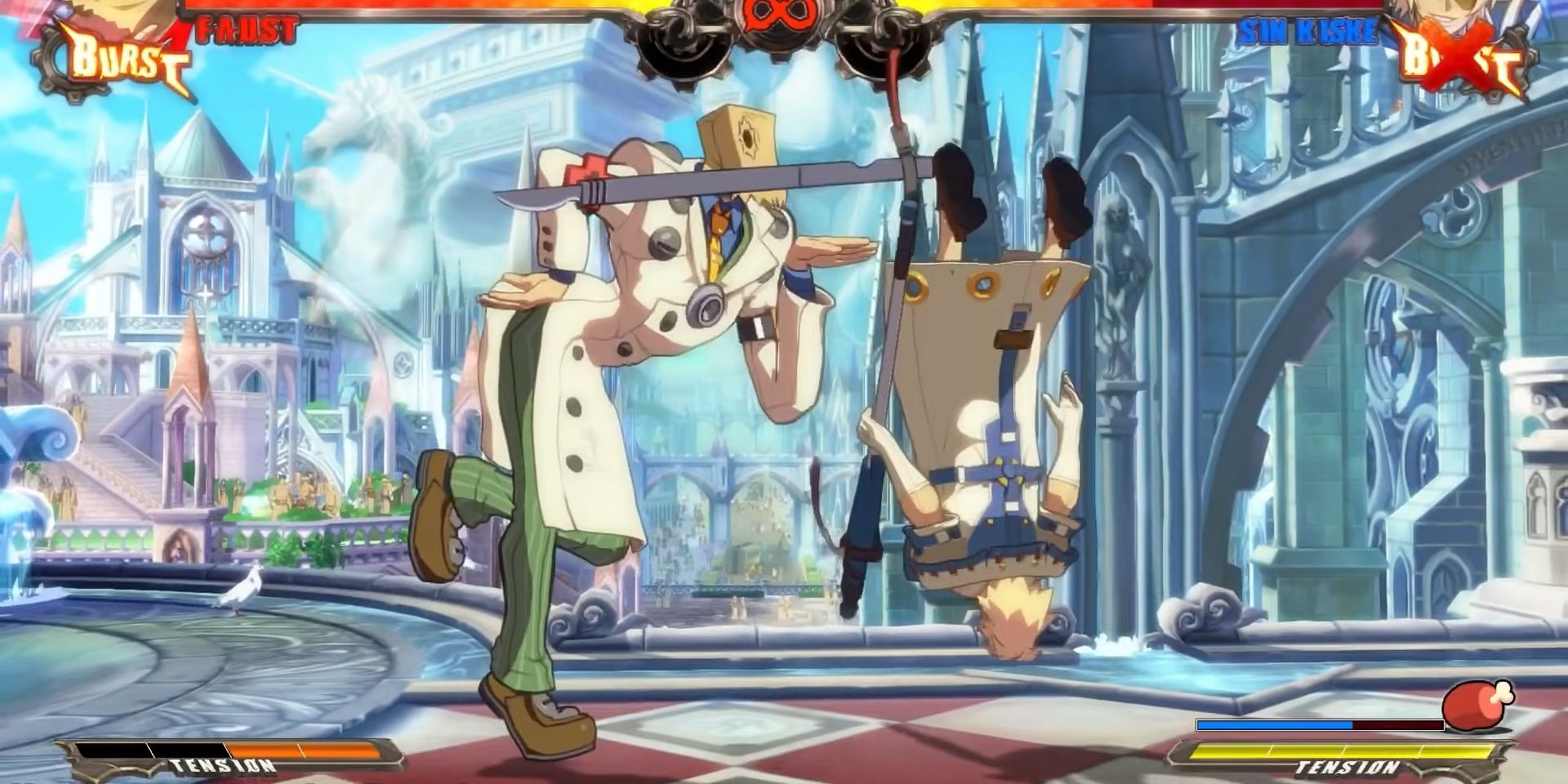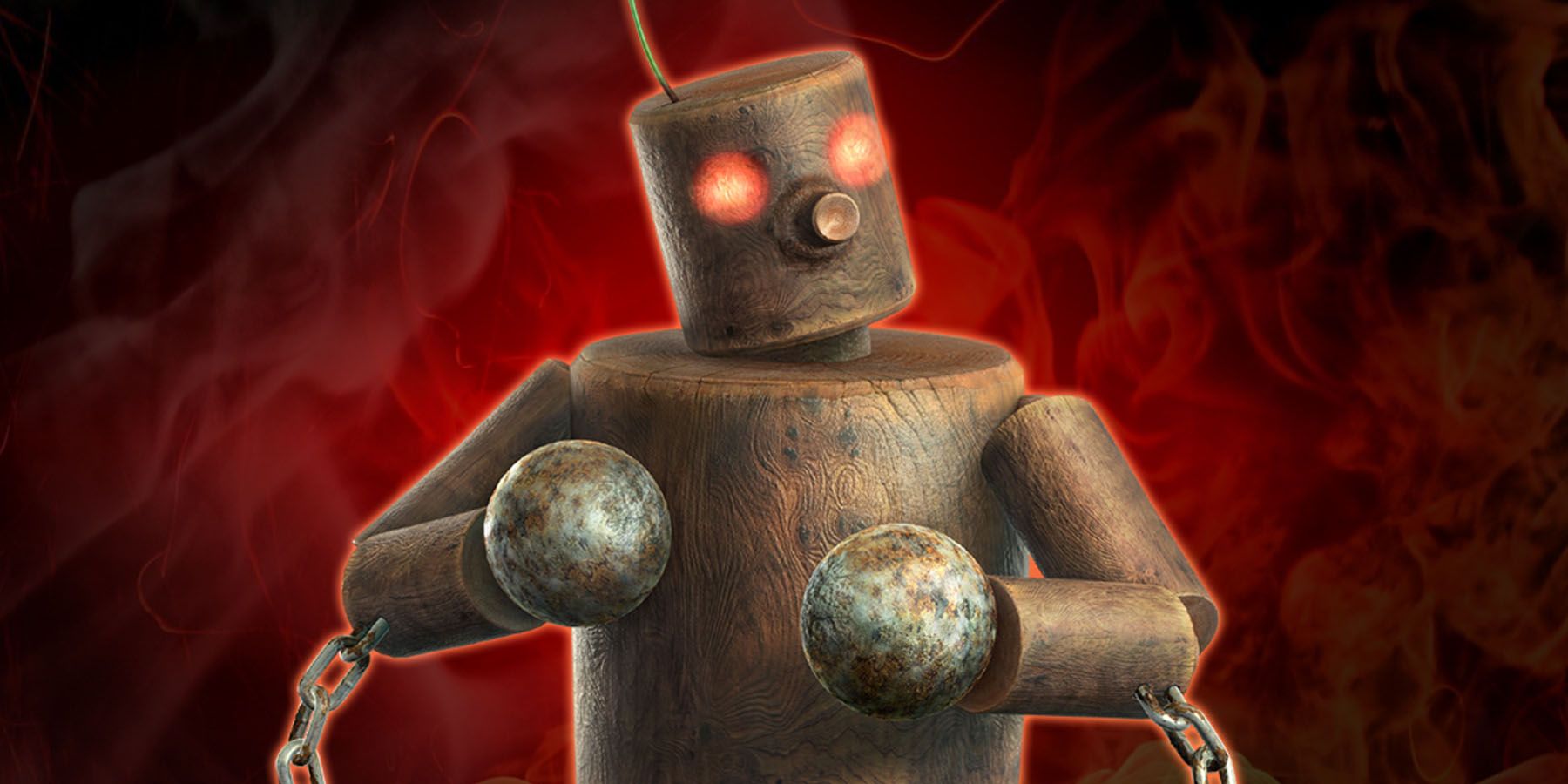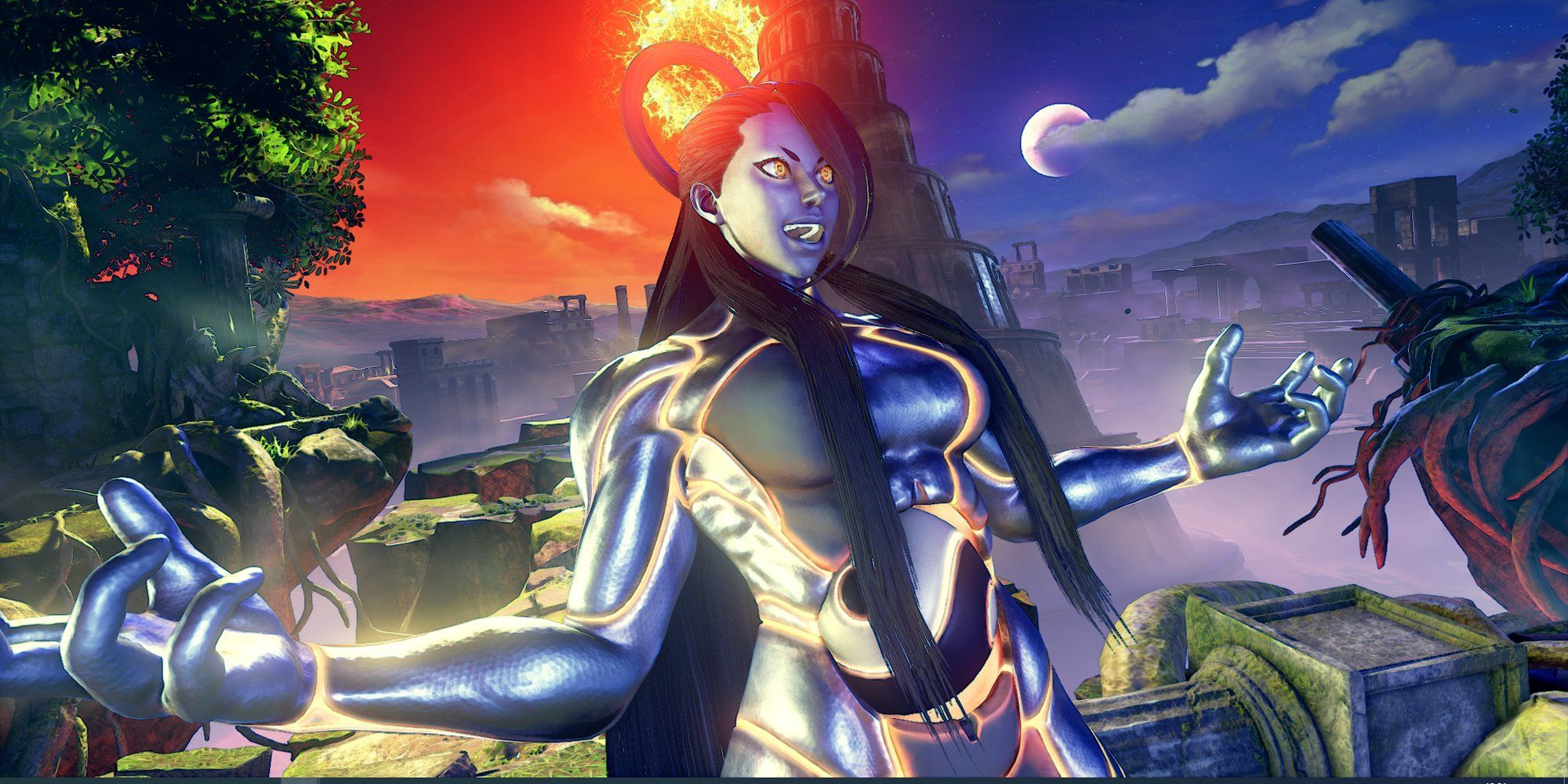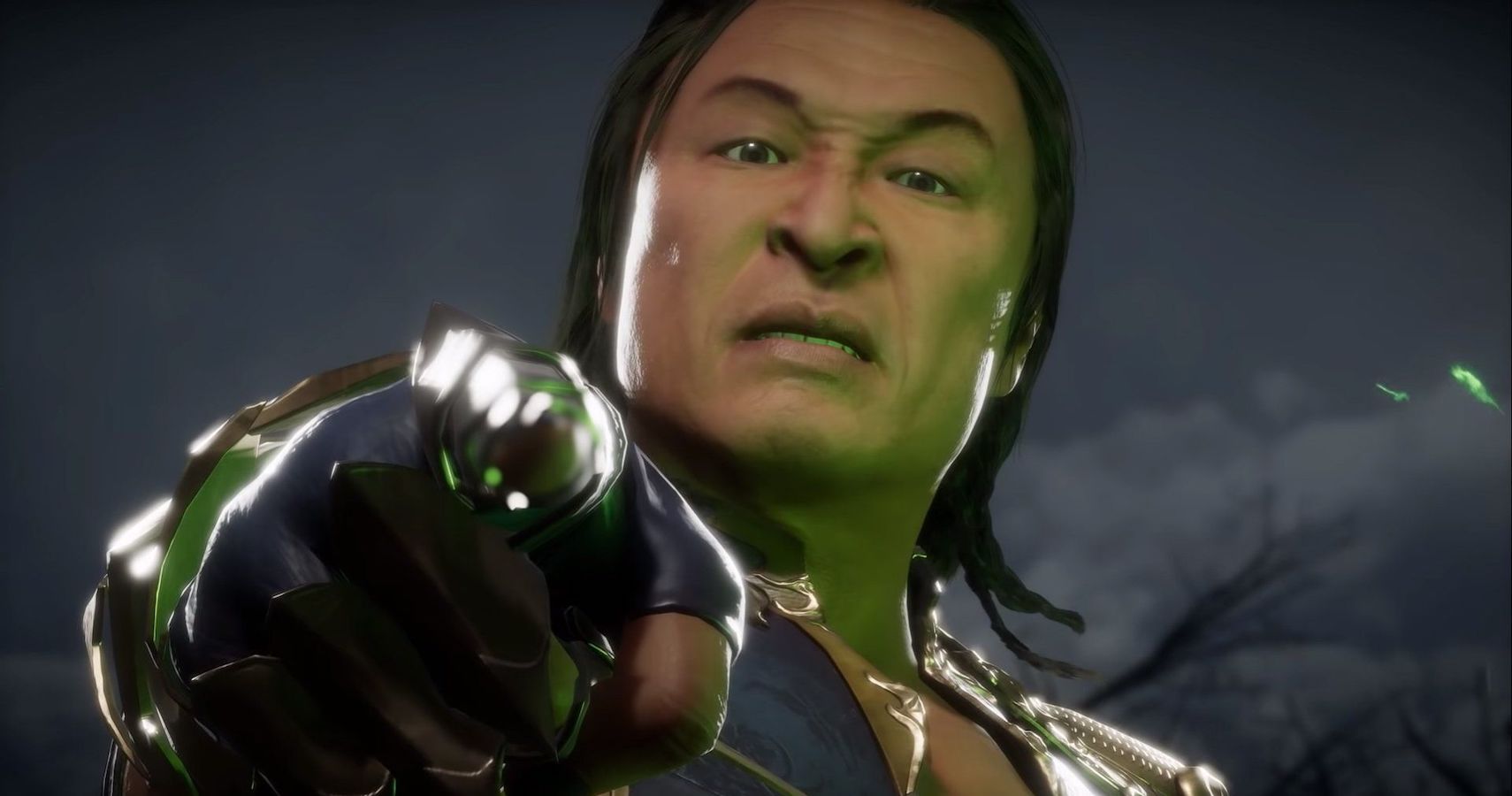Games
Best Character Archetypes In Fighting Games

Summary
Table of Contents
- Fighting games have diverse rosters & archetypes like Shotos, Charge, Grapplers.
- Characters mix elements from archetypes making them unique & versatile.
- Design-based archetypes like Karate Men, Femme Fatales, Freaks, provide variety in gameplay.
Fighting games possess some of the most iconic and recognizable rosters of characters across the entire medium of video games. Fighting games allow players to express and represent themselves and their playstyle via diverse rosters of characters that each come alongside their own strengths and weaknesses.
Related
Top “Clone Characters” in Fighting Games
Clone characters (or Echo Fighters) are often used to increase a fighting game’s roster without making entirely new assets. Here are ten of the best.
Across the breadth of fighting games, numerous archetypes of characters have formed that function similarly across countless titles, helping players easily identify characters whose play styles may resonate with a given player. So today, we’re going to dive into the most iconic of these fighting game character archetypes.
Updated on January 6, 2025, by David Heath: At this stage, it’s hard to imagine there being any fighting game archetype not covered by this list. Yet most fighting games today have huge rosters with characters that serve as examples of one, two, or several entries on this list. For example, Street Fighter 3’s Makoto is a rushdown character who’s often played as a grappler because of how important her Karakusa throw is to her setups.
While the debate over which characters are shotos or not has become ironic with the difficult, fireball-less Kazuya being promoted as a member of this projectile-slinging, easy-to-grasp class as a gag. Yet there are still more standout examples of fighting game archetypes that have left an impression on the genre, be it in their gameplay or their design. This is why they’ve been added to this list, alongside a few tweaks here and there.
Shotos
The Original Archetype
- Debut Game: Street Fighter 1 (Ryu & Ken)
- Characters: Terry Bogard (Fatal Fury), Jago (Killer Instinct), Haohmaru (Samurai Shodown)
Named after Shotokan Karate, the basis for classic Street Fighter duo Ryu and Ken’s fighting style, Shoto characters are defined by their well-rounded move sets, which are typically comparable (or even identical) to the aforementioned karate men. Shotos will often possess a projectile, a strong anti-air option like a rising uppercut, and a move that provides some kind of forward momentum.
They tend to possess few glaring weaknesses, serving as jacks-of-all-trades who reward the use of strong fundamentals. For example, players who get the hang of Ryu may then prefer the more glass cannon output of Akuma or the keep-away game Sagat offers. As such, they’re usually good characters for beginners to start with.
Charge Characters
Calculated Offense And Defense
- Debut Game: Street Fighter 2 (Guile)
- Characters: Vatista (Under Night In-Birth), Parasoul (Skullgirls)
Charge characters are named after the inputs of their special moves, as they require players to hold back or down for a bit before pressing forward or up+attack. This means they have to block or hold the direction during moves or other actions (aka “charge buffering”) to do their special moves. These charge moves are often very powerful, incentivizing defense-oriented gameplay in order to access them.
While they’re not the most mobile characters, charge characters are often incredibly difficult to approach. Especially when they’re crouch-blocking, because they can flexibly react with different moves based on their opponent’s actions. They also recover faster afterward, so they can fit in a quick combo on contact, or even walk alongside their projectiles to pop open their opponent’s defense.
Grapplers
Getting Up Close And Personal
- Debut Game: Street Fighter 2 (Zangief)
- Characters: Tizoc/King of Dinosaurs (Garou: Mark of the Wolves, King of Fighters), King (Tekken)
Often characterized by their slow speed and range, the grapplers‘ biggest strengths are their large pools of health, high damage output, and most importantly, their command grabs. While characters in most fighting games tend to have some standard grabs, grapplers often possess numerous throws that can be used in different scenarios that can deal huge sums of damage, like Zangief’s Spinning Pile Driver.
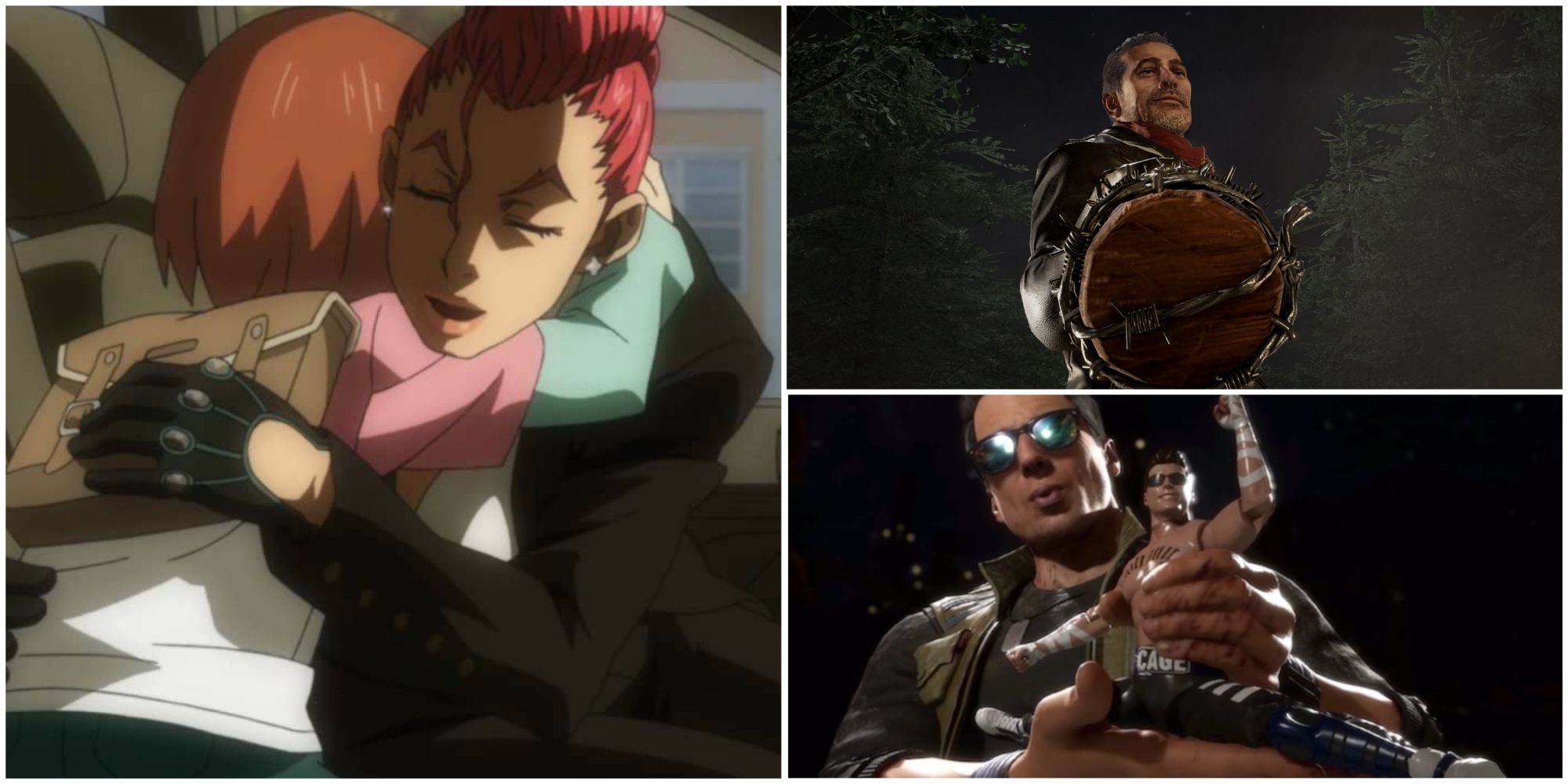
Related
Lesser-Known Fighting Game Archetypes
Everyone knows zoners and grapplers, but fighting games have quite a few unique character archetypes as well.
While they’re a force to be reckoned with up close, they suffer from a lack of mobility and options when facing characters who can fight from a distance (e.g. zoners, keep-away, etc.) Some grapplers have powerful anti-air options to punish opponents for jumping out of their command grab range, which can then give them time to close the gap and either throw them on the ground, or even grab them in midair.
Semi-Grapplers
Quicker Than The Average Wrestler
- Debut Game: King of Fighters ’94 (Clark Still)
- Characters: Alex (Street Fighter 3: New Generation), Potemkin (Guilty Gear), Beowulf (Skullgirls)
Not every grappler is a giant hunk of muscle, but the smaller ones can be quite rare. Most of the time, they end up as semi-grapplers. They still rely on catching opponents in command grabs, but they’ll often be shorter, more mobile, and have more striking options. In fact, their striking moves will often be imperative for getting them within grabbing distance.
Street Fighter 3‘s Alex’s Slash Elbow, Flying Cross Chop, and Air Stampede see him fly across the screen to knock his opponent down or stun them long enough for a Headbutt or Power Bomb. While Guilty Gear‘s Potemkin can’t dash normally, he can cancel his Hammer Fall punch to close the distance, or bait opponents into his Heavenly Potemkin Buster super.
Big Bodies
Large And In Charge
- Debut Game: Street Fighter 2 (Zangief), Samurai Shodown (Earthquake for a non-grappler example)
- Characters: Abigail (Street Fighter 5), Kuma (Tekken), Bowser and Ganondorf (Super Smash Bros)
Big-Body characters are unsurprisingly defined by their big bodies! These characters usually have large hitboxes, slow walk speeds, and pack huge amounts of damage per hit. Thus, they tend to lack options for dealing with zoning and projectiles due to their massive bulk. Most grapplers tend to also be Big Bodies, but to set them apart from their throw-happy brethren, they tend to focus more on their strikes.
For example, Marisa in Street Fighter 6 has long-range punches and thrust kicks that do a lot of damage. She and other Big Bodies are still susceptible to Hadoukens and projectiles, but they often have high defense and health bars to power through light attacks. Then their attacks will often have armor attacks as well, so any projectile-spammers can find themselves on the business end of a heavy boot to the face.
Heavy Weights
Too Much For Others To Take
- Debut Game: Super Smash Bros (Donkey Kong)
- Characters: King Dedede, Incineroar, Kazuya (Smash Bros series)
What separates Heavy Weights, or Powerhouses, from Big Bodies? For one, the term is largely Smash-specific, or at least more key to platform fighters than the usual 1-v-1 match. They’re not always big either. Bowser and King Dedede have been able to tank hits since Melee and Brawl respectively, but Tekken‘s Kazuya can do the same while being smaller in Super Smash Bros Ultimate.
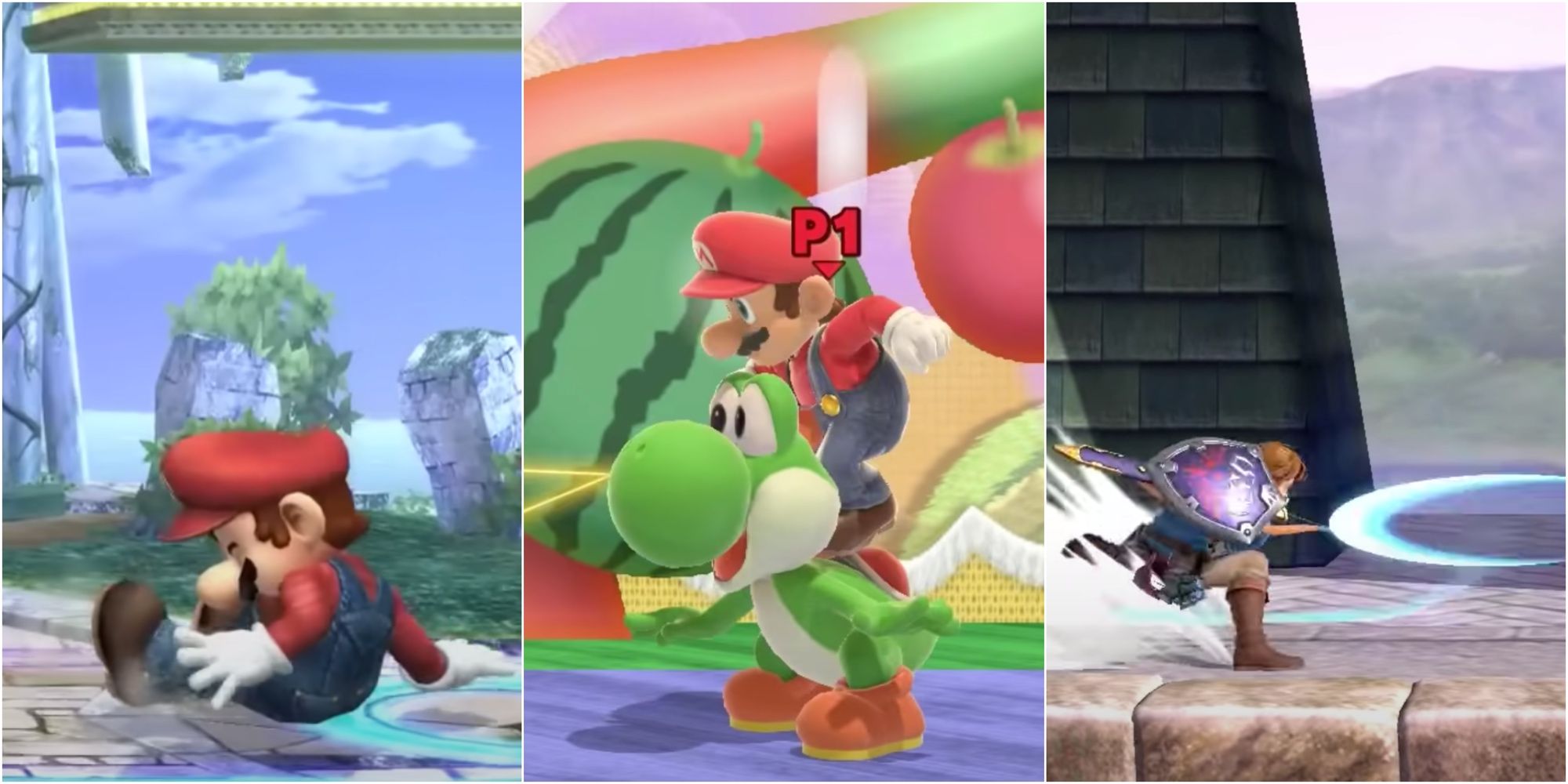
Related
Super Smash Bros: 7 Hidden Mechanics In The Games
The Super Smash Bros series is packed full of secret mechanics, all of which are a lot of fun to experiment with during a chaotic match.
They’re also really strong, with the potential to KO opponents when they’re still relatively fresh. One well-timed, fully-charged hammer strike from King Dedede could send a 30-40% fighter off into the stratosphere. However, to make up for that, their extra weight makes it hard for them to recover in the air or reach platforms to avoid a pitfall, so they can be just as easily KO’d if they’re kept away from the platform edges.
Bullies
Putting Pressure on Their Opponents
- Debut Game: Street Fighter 2 (Sagat)
- Characters: Broly (Dragon Ball FighterZ), Urien (Street Fighter 5), Ralf (King of Fighters)
Bullies, or pressurizers, are one of those archetypes that are hard to define but are recognizable once players see them in action. They’re all about shutting down their opponent’s attacks, often with their own heavily armored strikes. Their attacks can reach far to catch them, then pressure them into the corner for more punishment. Whatever the opponent does, the bully forces them to stop and either block, or get beaten up.
Street Fighter‘s Sagat is a classic bully. From a distance, he can irritate players with a barrage of projectiles before catching jumping opponents with his Tiger Uppercut. His normal kicks reach far too, either stuffing their opponent’s attacks or pressing through them with their armor. They can even open them up for his devastating super combos too. It’s no wonder he’s been a nightmare in games like Super Street Fighter 2 Turbo and Street Fighter 4.
Zoners
Chucking Everything At the Wall
- Debut Game: Street Fighter 2 (Dhalsim)
- Characters: Peacock (Skullgirls), Cyclops (Marvel Vs Capcom 2), Duck Hunt Duo (Super Smash Bros Ultimate)
Perhaps one of the most salt-inducing archetypes for fighting game newbies (and many veterans to be honest), zoners are characters whose core strategy relies on throwing out attacks from afar to keep opponents at bay. While they’re often rather frail, having little health and weaker normal attacks than nearly everyone else on the roster, their abilities excel at longer ranges.
They’ll throw everything from fireballs to objects, or even stretchy-limb attacks, to keep their opponents at the far end of the screen. Even jumping opponents can be vulnerable if they have anti-air attacks, like Dhalsim’s Yoga Blast in the Street Fighter games. Still, they can be taken down with patience, as even the most oppressive of projectile barrages can be overcome with correctly utilized jumps, blocks, and reads.
Taking Center Stage
- Debut Game: King of Fighters ’94 (Benimaru as a dedicated mid-screen poker character)
- Characters: Karin (Street Fighter Alpha 3), Luke (Street Fighter 5), Kilik (SoulCalibur)
Many fighting game terms have rather fluid definitions because it can take one new character, one new technique, or some other event to change them. The term “footsie” is already complicated as different people apply it to different situations. Most of the time, it usually involves players who fight for control of space in the middle of the screen, rather than getting up close like grapplers or staying away like zoners.
6:45
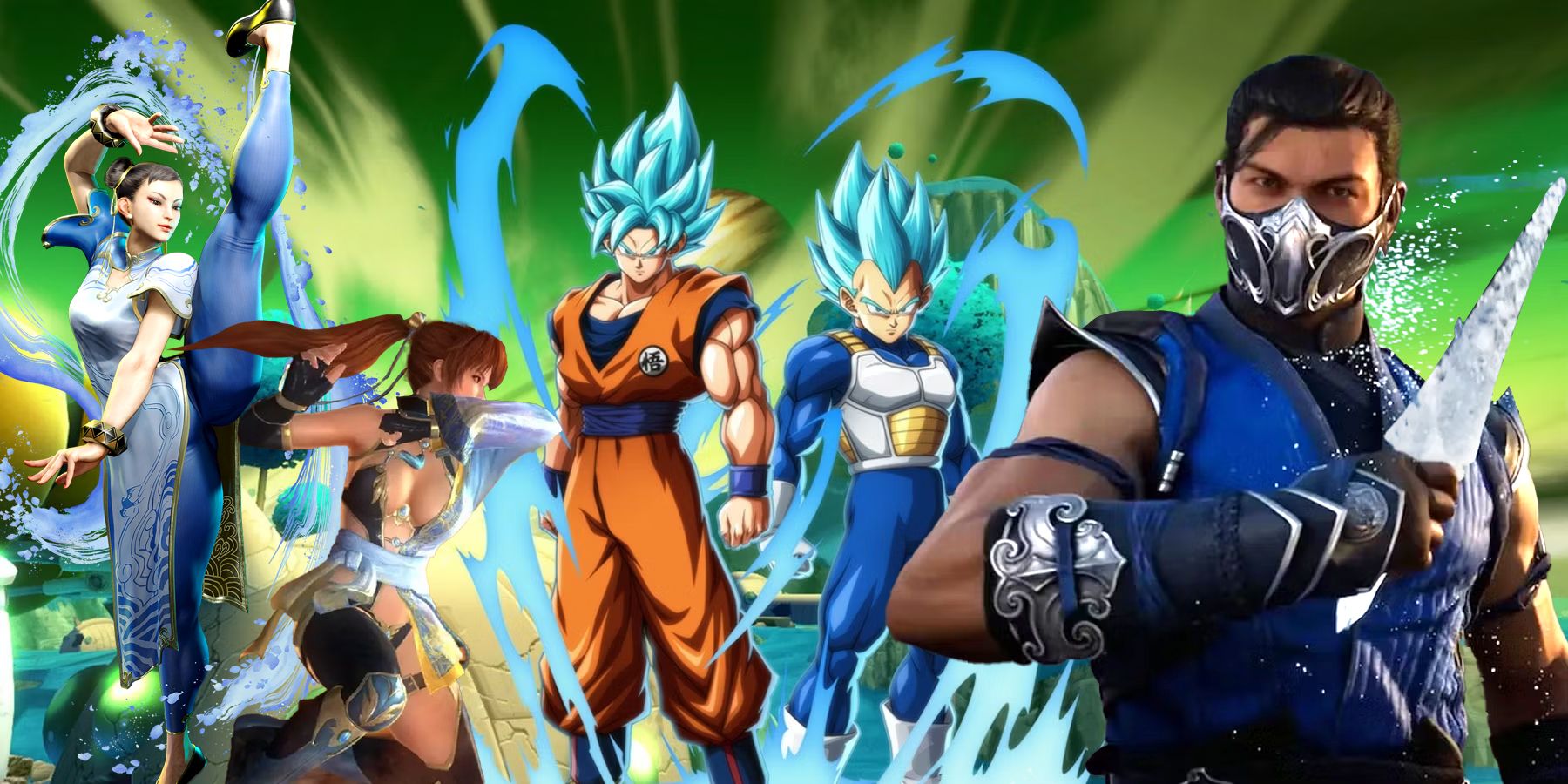
Related
The 14 Best Fighting Games For Beginners, Ranked
Fighting games can be pretty intimidating for newcomers to the genre. The following games, however, are a good place to start.
Any character with strong poking attacks is good at pulling off footsies, like Street Fighter‘s Cammy, or most of the cast in Street Fighter 3: Third Strike. However, there are some characters that seem designed for footsies. Karin’s moves in Street Fighter Alpha 3 are particularly strong at mid-range, from her chain specials that push the opponent back, to her throws and setups that leave them vulnerable in the middle of the stage.
Rushdown Characters
The Best Defense Is A Good Offense
- Debut Game: Street Fighter 2 (Ken)
- Characters: Chipp Zanuff (Guilty Gear), Yamcha (Dragon Ball FighterZ), Dudley (Street Fighter 3: New Generation)
Rushdown characters are all about getting in their opponent’s face as quickly as possible and hammering them with fast combos. They tend to be some of the more popular characters in their respective games, if not top-tier, because they’re simple to pick up and play, and not too hard to master after practice. But they have their drawbacks.
They need to get up close to make the most of their combos, making them susceptible to throws, reversals, and counters. Zoners and Footsie-characters can also keep them at bay with their projectiles and poking attacks. This is why some rushdown characters, like Street Fighter‘s Guy and Dudley, have special dashes to get around them, complete with follow-up attacks players have to master. As such, they can be more technical than they seem.
Glass Cannons
Heavy Damage, Heavily Damaged
- Debut Game: Super Street Fighter 2 (Cammy)
- Characters: Akuma (Street Fighter Alpha onward), Mira (Killer Instinct), Zero (Ultimate Marvel Vs Capcom 3)
Another variant of the rushdown and other offense-heavy archetypes are the glass cannons. They also thrive on getting up close in the opponent’s face, applying pressure with a constant barrage of attacks like their lives depended on it. That’s because it kind of does. To make up for their oppressive offense, their defense is especially weak.
For example, take Street Fighter‘s Akuma. He combines the shoto move list with mix-ups, multiple super moves, and a hefty amount of attack power. However, it takes a few hefty combos to put him down. Once he’s put on the defensive, he has trouble getting past his opponent’s attacks. He’s got a teleport, and some games give him a counter move. But he’s better at ruining everyone’s days by being on the offensive.
Reversal Characters
Counter-Offensive
- Debut Game: Fatal Fury Special (Geese Howard)
- Characters: Enkidu (Under Night In-Birth), Kasumi Todoh (Art of Fighting 3), Hakumen (BlazBlue)
Speaking of ruining everyone’s day, reversal characters can do exactly that by punishing their errant strikes. They fight primarily by waiting to counter an opponent’s attacks or surprising enemies when they’re recovering from attacks. Rushdown and Glass Cannon players are particularly at risk of getting shut down by a Reversal player’s parries, throws, and counters.
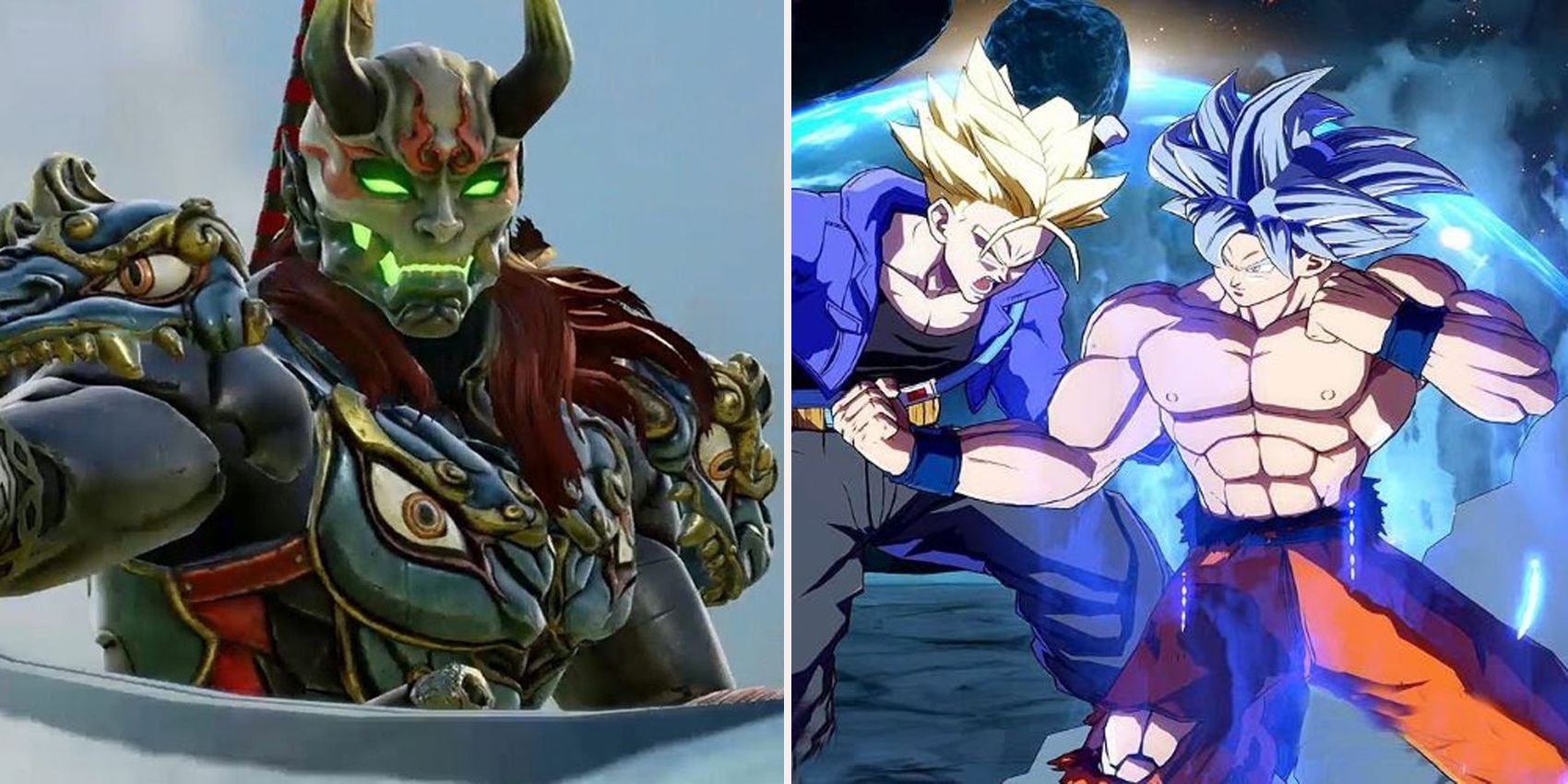
Related
The 10 Most Infuriating Characters To Fight In Fighting Games
Fighting games usually always feature a diverse roster of characters. Unfortunately, some of them are absolutely infuriating to fight.
Reversal moves are pretty common in fighting games, so not every character with a reversal counts (e.g. Tekken‘s Paul Phoenix has one, but he plays more like a rushdown character). The archetypical character uses them as a key part of their kit. Fatal Fury/King of Fighters‘ Geese uses his to frustrate his opponents, while Virtua Fighter‘s Aoi can reverse attacks from almost every position, be it with her back turned or while lying on the ground.
Run-Away Characters
Hit & Run
- Debut Game: Street Fighter 2 (Chun-Li, Vega)
- Characters: Hazama (BlazBlue), Sonic (Super Smash Bros)
A run-away character is essentially the opposite of a rushdown character. These characters don’t necessarily zone out their opponents as they might not even have projectiles to throw at them. Their main goal is to hop all around the stage to avoid getting hit, then close the distance when their opponent leaves themselves open. After they’ve landed a few good hits of their own, they’ll be on the run once more.
They’ll often be more mobile than the average character, with faster walks and runs, more midair attacks, wall jumps, or double/triple jumps. Some players also refer to this style of character and gameplay as a turtle or turtling, since they rely on these defensive tactics so much. Run-aways would usually end up smashed to bits if they tried to be more upfront. It can be very effective, but also very tedious for both the opponent and the player.
Bait & Punish
Playing Mind Games
- Debut Game: Street Fighter 2 (Ryu)
- Characters: Wario, Steve, Byleth (Smash Bros), Baiken (Guilty Gear)
Bait & Punish is more of a play style. If the player can predict how their opponent’s going to react in certain situations, they can get the advantage over them. Ryu and Sagat’s AI in the original Street Fighter 2 showcased this by constantly throwing fireballs to make the player jump, so they could hit them with their Shoryuken/Tiger Uppercut. That said, there are some characters who thrive on this strategy more than others.
For example, Guilty Gear‘s Baiken has a move set designed to trap overly-aggressive opponents. If they dash at her, she can stuff them with her Tatami Gaeshi. Then she has reversals that activate on block, so they can catch a foe at any point in their combo. They range from giving them more pain or shutting off their move set temporarily via her Curse supers. If players master reading the opponent’s mind, they’ll get the best out of Baiken.
Mix-Up Characters
Playing The Guessing Game
- Debut Game: Super Street Fighter 2 (Cammy)
- Characters: I-No (Guilty Gear XX), El Fuerte (Street Fighter 4), Chizuru (King of Fighters)
Given the genre is all about players trying to read each other’s moves and counter them effectively, mix-ups are a fundamental part of fighting games. They’re combos and setups that mix different attacks at different levels to confuse the opponent into making a mistake and breaking their defense. Some games will even design fighters around this technique, thus creating mix-up characters.
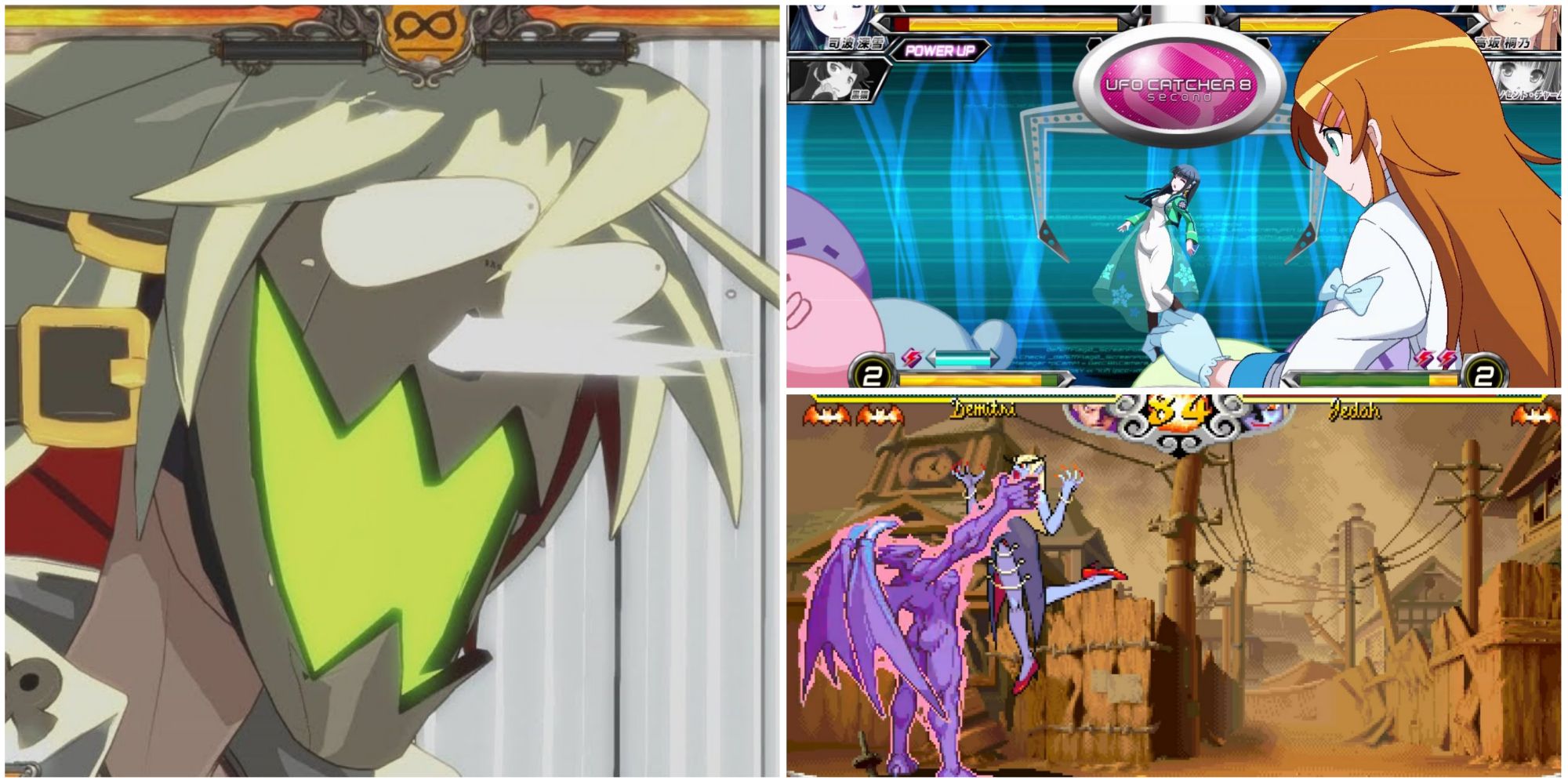
Related
Weirdest Super Moves In Fighting Games
There’s no denying that fighting games have incorporated some strange super moves over the years…
They’ll usually possess numerous moves that have similar or identical startups, which can then lead to different attacks that must be blocked or dodged in different ways. This way, the opponent won’t know whether they should’ve blocked high, blocked low, backdashed, etc., to avoid one strike or another until it is already too late.
Set Play
Stay Down Or They’ll Keep You Down
- Debut Game: Street Fighter Alpha (Rose)
- Characters: Millia Rage, Zato-One (Guilty Gear), R. Mika (Street Fighter 5), Sub-Zero (Mortal Kombat 1)
Many mix-up characters are also Set-Play characters. Set-plays are specific mixups players can use to keep their opponent down after knocking them down. If characters keep doing the same set of moves over and over, they would become predictable and vulnerable to reversals. So, set-play characters keep their opponent guessing with multiple varied set-plays until they press them back into the ground.
Guilty Gear‘s Zato-One is good at this because he can use his shadow creature, Eddy, to attack one way while striking the opponent in another. However, his rival, Millia Rage, is just as great at it, as her Tandem Top static projectile lingers long enough on-screen to keep rising opponents blocking one way, while leaving themselves vulnerable to other attacks, particularly other block-confusing attacks like cross-ups.
Tricksters
What On Earth Are They Doing?
- Debut Game: Tekken 2 (Yoshimitsu)
- Characters: Faust (Guilty Gear X), Voldo (SoulCalibur), Teddy (Persona 4 Arena Ultimax)
The term trickster has also been used for specific mix-up characters like Chizuru and Dragon Ball FighterZ‘s Krillin, as they often produce after-images in their attacks to confuse opponents. They’ll have to think twice about which character is the real one, giving the player an opening to follow up. However, for this list, this archetype will fit characters whose moves are deliberately weird and strange to put opponents off going on the offensive. For example, Faust has a low, crouching, neutral stance (until Guilty Gear Strive) that hides his tall height and long-reaching attacks.
His strange pogo moves can also reach further than they look, and be delayed to throw off the opponent’s timing. He throws up random projectiles that could either provide a power-up for either player if caught first, or pain via poison vials and meteor showers. Then he can do teleporting attacks where he opens a door to open up his foes. Though it rarely makes them high-tier characters as, once an opponent figures out their tricks, they find it hard to regain the advantage, tricksters can make for great surprise picks to catch opponents off guard.
Mimics
Copycats
- Debut Game: Tekken 3 (Mokujin)
- Characters: Charade (SoulCalibur 2), Eleven (Street Fighter 5)
Not to be confused with characters who can turn into others, a la Mortal Kombat‘s Shang Tsung, Mimics mostly exist for players to show off their extensive character knowledge. They swap between other characters’ move lists per round randomly, so they can offer the player’s main character, or give them the lowest tier scrub in the same match. Either way, players need serious skills to get the most out of them.
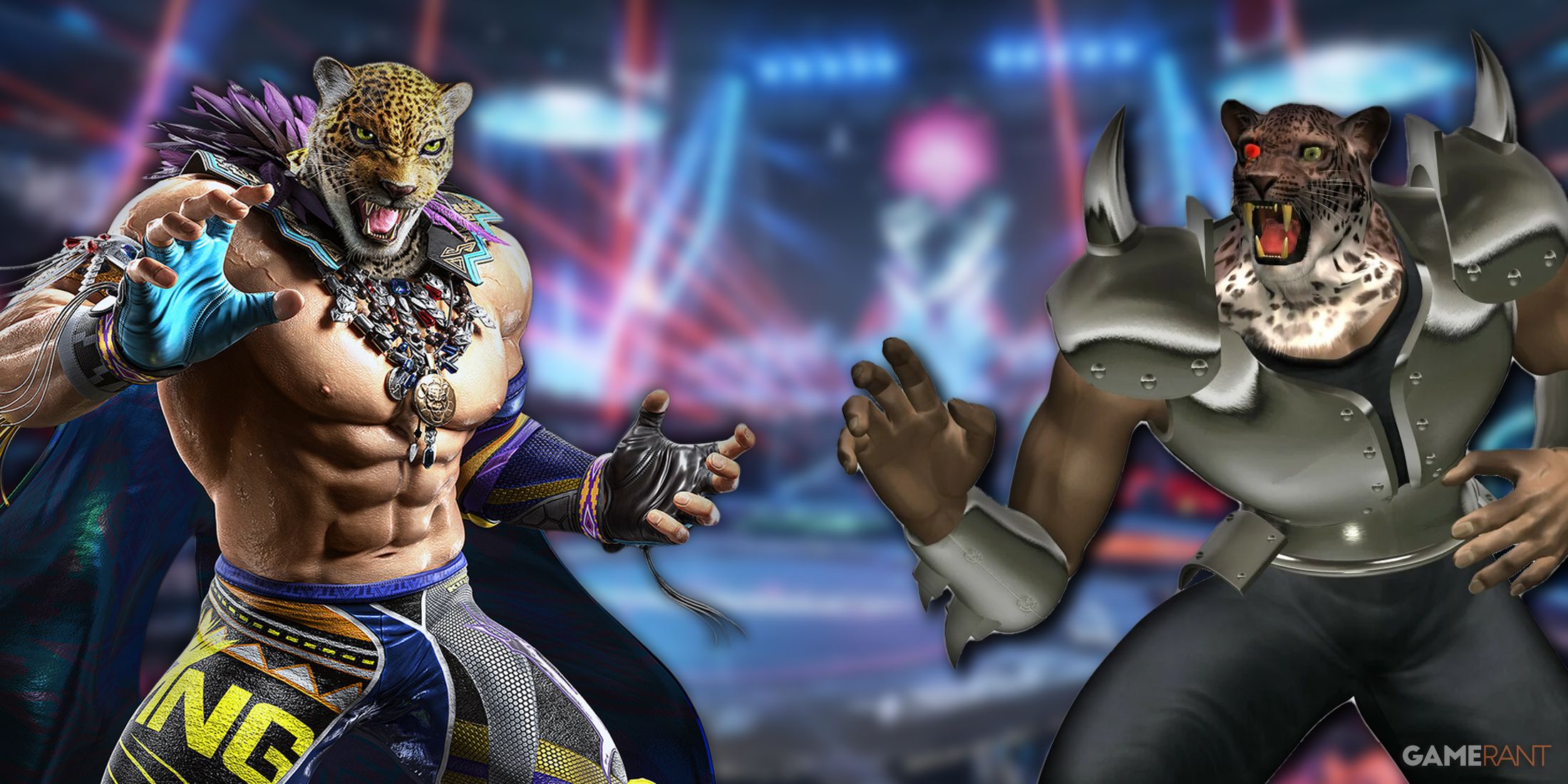
Related
Every Classic Tekken Character Not in Tekken 8 So Far
While Tekken 8 may feature a substantial amount of the entire series’ historical roster, some of the oldest characters haven’t made it in.
The most famous mimic character is Tekken‘s Mokujin, who’s been switching up move lists since Tekken 3. The only difference is that the wooden dummy has set proportions. This means some of his mimics can be better or worse depending on the character. For example, he has better reach than Julia Chang, so his take on her style can close the distance more easily. But he has a much shorter reach than Kuma, Panda and the Jacks, making mimicking their styles less ideal.
Composite Characters
Mixing And Matching Moves
- Debut Game: Virtua Fighter (Dural)
- Characters: Ogre (Tekken 3), Double (Skullgirls), Shang Tsung (Mortal Kombat 11)
Composite characters, not to be mistaken with clone characters or mimic characters, fight with a mix of moves taken from the rest of the game’s cast. This can make them very easy to pick up as they offer some degree of familiarity, but very difficult to master because they have different set-ups to everyone else.
For example, Street Fighter 4‘s Seth has Chun Li’s Lightning Kick, Zangief’s Spinning Pile Driver, and Dhalsim’s stretchy limbs. Aside from the trickiness of putting all these moves together, he has less health than most of the roster too. But, like other composites, he’s flexible enough to adapt to different styles of play, or even combine the effectiveness of one class (Rushdown) with the damage output of another (Grappler).
Shapeshifters
Picking Another Character Mid-Battle
- Debut Game: Mortal Kombat 2 (Shang Tsung)
- Characters: Twelve (Street Fighter 3: Third Strike), Chameleon & Khameleon (Mortal Kombat), the cast of 3D Ballz
One of the reasons Mimics and Composite characters may have caught on, aside from easing development by reusing assets, might be because they’re easier to make than shapeshifters. They’re not exactly a common archetype, though they made an impact when they debuted. If players got lucky enough to reach Shang Tsung, the final boss of Mortal Kombat, they’d discover they had the ability to transform into everyone else on the roster!
This ability carried over into Mortal Kombat 2, where the sorcerer was playable for the first time. It was a fun ability, though one that got less fun when games moved onto CDs, where Tsung’s morphs caused the game to stop and load his new form. So, Tsung lost the ability within gameplay until MK11 turned him into a Composite character. But the archetype lives on either through gimmicky supers, like Twelve’s X.C.O.P.Y, or in indie fighters like the Convict in Newgrounds Rumble.
-

 Games4 weeks ago
Games4 weeks agoSeverance Season 2 May Reveal Sinister Clue About Ms Casey's Disappearance
-

 Games4 weeks ago
Games4 weeks agoThe 15 Best Characters of 2024
-

 Games3 weeks ago
Games3 weeks agoXbox Game Pass Losing 7 Games Today, One of Which Is Gone Forever
-

 Games4 weeks ago
Games4 weeks agoThe Best Duelists In Marvel Rivals
-

 Movies4 weeks ago
Movies4 weeks ago“The Brutalist” Leads Chicago Film Critics Association Nominees | Festivals & Awards
-

 Games4 weeks ago
Games4 weeks agoHow to Find Melchiah in Legacy of Kain: Soul Reaver
-

 Games4 weeks ago
Games4 weeks agoGames With The Best Graphics
-

 Games4 weeks ago
Games4 weeks agoBest Horror Games With Immersive Flashlight Mechanics

